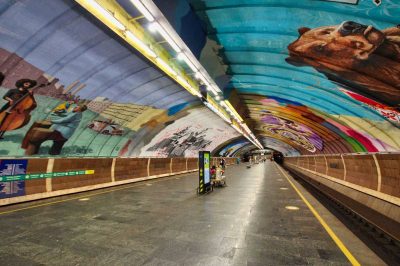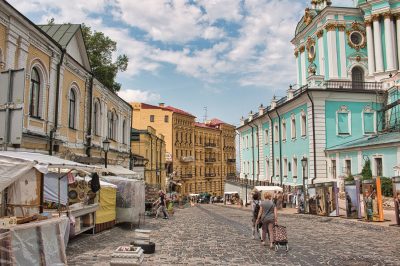The Chernobyl nuclear accident is still considered the worst nuclear disaster in the world. It released a huge amount of radioactive material into the atmosphere and poisoned the landscape around the reactor. The Chernobyl Exclusion Zone, which stretches 30 kilometers around the accident reactor, is a radioactive wasteland. On tours from Kyiv to the Chernobyl Exclusion Zone, visitors can see how the Soviet Union was preserved in the area’s ghost towns. Organized tours take tourists there to explore what remains of this sunken land. This article explains what happened during the accident, introduces the Chernobyl Exclusion Zone and its best sights, and gives many details about tours to Chernobyl.
In what region is the Chernobyl Exclusion Zone located?
The original settlement of Chornobyl gave its name to the power plant 18 kilometers away and thus to the devastating disaster. The different spellings of Chernobyl and Chornobyl in English are based on the transcription either from Russian (Чернóбыль) or from Ukrainian (Чорнобиль). We use the Ukrainian name for the city, since it is located in independent Ukraine, but the Russian name for the nuclear power plant and the reactor accident, since these are more common. The city of Chornobyl itself was founded in the Middle Ages on the right bank of the Prypiat River.
The region in the Prypiat swamps was already in the Middle Ages a borderland between the Grand Duchy of Lithuania, Kyiv Rus, the Kingdom of Poland and other empires. The marshland is also one of the most beautiful natural areas in Europe where especially many bird species feel at home. During the Second World War both the town itself and the surrounding area were occupied by German troops. They committed unimaginable atrocities in the region as well as in the whole Ukraine. Especially the Jewish population of the town was almost completely murdered. Therefore, in the restricted zone there are numerous memorials commemorating the victims of these crimes and the fallen Red Army soldiers. At the end of the 1970s, the town had almost 13,000 inhabitants.
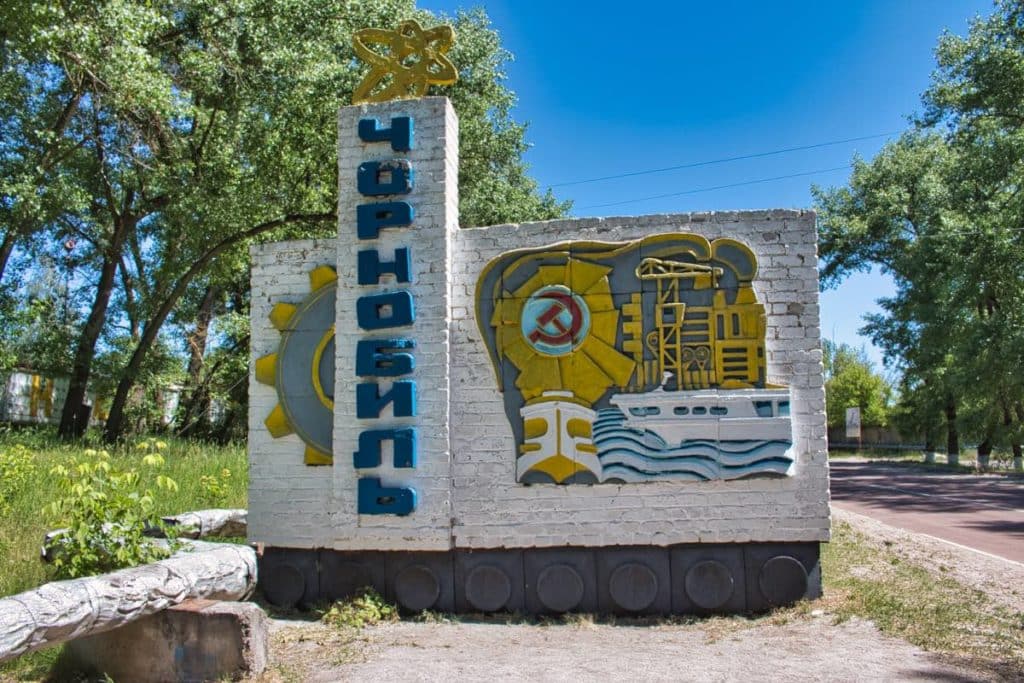
Meaning of the name Chernobyl
For some it is a sign from God, for others it is a strange coincidence. But the name Chornobyl in Ukrainian is the word for the biblical star Wormwood. About this star it says in Revelation Psalm 8:10, 11: “And the third angel sounded, and there fell a great star from heaven burning like a torch, and it fell upon the third part of the rivers of water, and upon the fountains of waters.
And the name of the star is called wormwood. And the third part of the waters became wormwood; and many men died of the waters, because they were become so bitter.” For many believers, this is a divine sign. In their eyes, God wanted to destroy the godless Soviet Union. Whether one believes in it or not, the Chernobyl nuclear accident did indeed contribute significantly to the collapse of the Soviet Union.
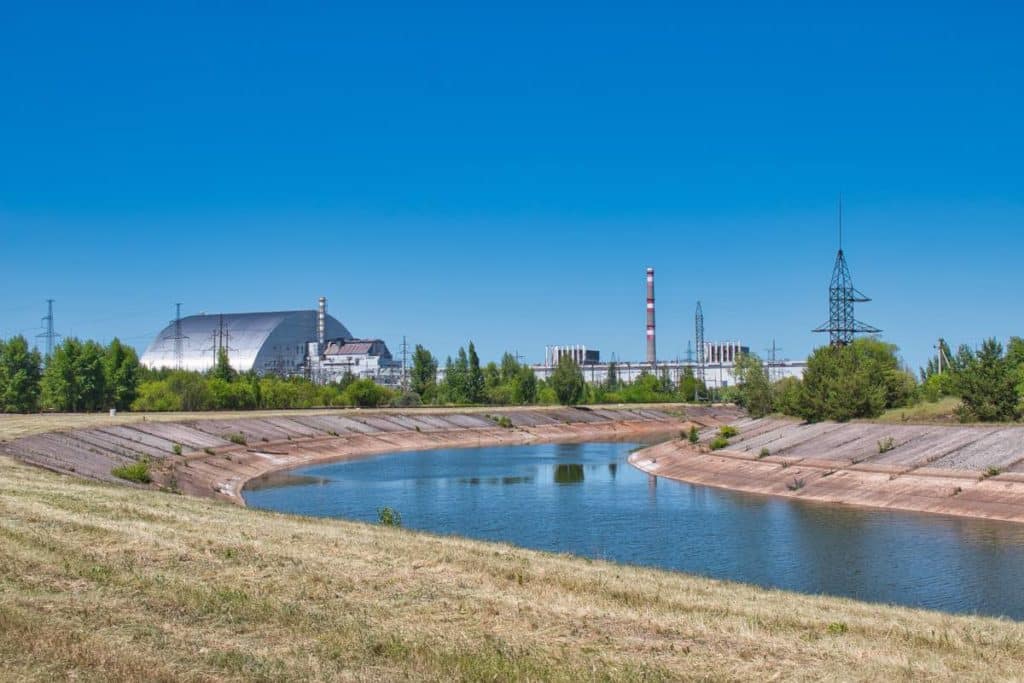
Decision for the Chernobyl nuclear power plant
In 1969, the Council of Ministers of the Soviet Union decided to build two RBMK- 1000 reactors at the Chernobyl site. The 1000 stands for 1000 megawatts of electrical power. This made the region north of the capital Kyiv of the Ukrainian Soviet Socialist Republic the third site of this reactor type and the first site of a nuclear power plant in Ukraine.
Above all, the proximity to Kyiv, a city of over a million inhabitants, combined with the reactor’s relative peripheral location and its position on the Prypyat River, led to the decision in favor of this region. Although the weak points of the RBMK reactors were known, the lower construction and maintenance costs and the resulting electricity generation costs, which were about 15 percent lower, outweighed the water-water energy reactors (WWER) with pressure vessels, as well as easy scalability and relative immunity to faults up to that point.
Construction project and settlement of residents from all parts of the Soviet Union.
After the first two reactors were under construction, it was decided to add four more units. After the commissioning of unit 1 in 1978, the other three followed in 1979, 1982 and 1984. It is true that many locals, most of whom spoke Ukrainian, were recruited for the construction of the power plant and the city. However, among the engineers and power plant employees, especially in the beginning, there were many from other Union republics, mainly from the Russian SSR. The meeting of Russians and Ukrainians was not always free of conflict. These contrasts are described in detail in the book “Chernobyl” by historian Serhiy Plokhy*, which is one of the best works about the reactor accident. Nevertheless, construction crews managed to complete the power plant and the adjacent town of Prypyat on schedule.
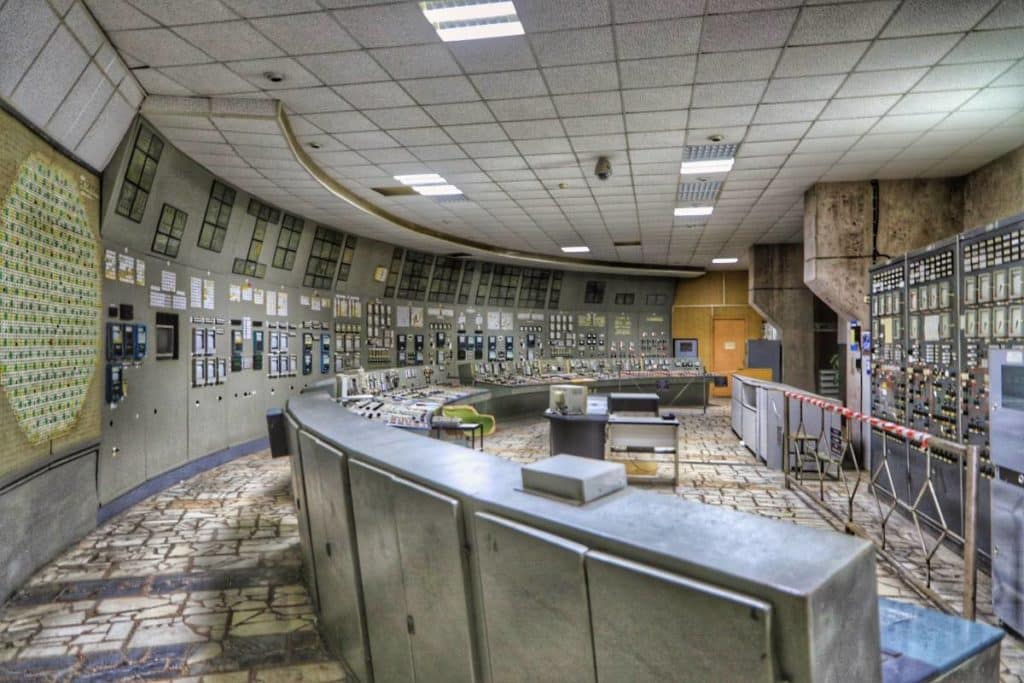
Operation of the Chernobyl nuclear power plant
Due to the construction-related disadvantages of the reactor design of the RBMK reactors, 17 reactors remained in service in the Soviet Union until 1986, 4 of them in Chernobyl. At peak times, up to 9000 people worked in all 4 units of the Chernobyl nuclear power plant. Since units 1, 2, and 3 also went back online after the disaster, the number of employees decreased only slowly.
Commercial operation of the power plant ended only on December 15th 2000 with the shutdown of unit 3. Since then, about 2000 people are still employed on site with monitoring, maintenance or dismantling work. The workers commute daily between their place of residence (Slavutych) and the power plant or spend the night in the Chornobyl settlement, which lies outside the 10-kilometer zone.
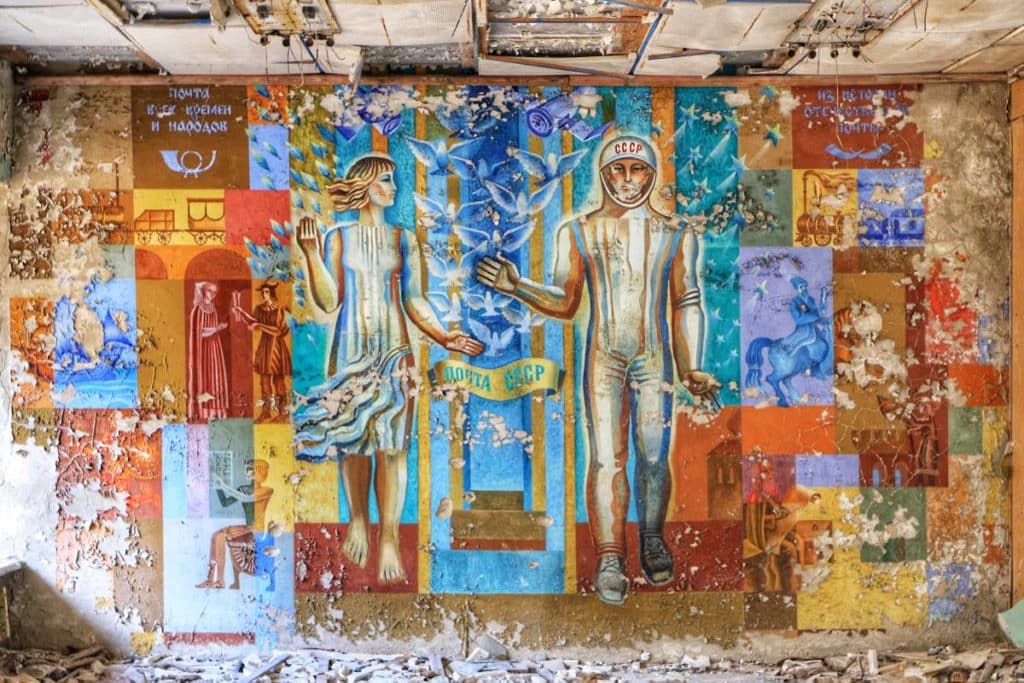
Life in Prypiat
Not far from the Chernobyl nuclear power plant, the city of Prypiat was built starting in 1970. As in other construction projects of the time, the construction was mainly in block construction, i.e. made of prefabricated concrete slabs or, as in the cases of public buildings, in steel skeleton construction. For this purpose, a concrete slab factory was specially built in the city. Prypiat was able to offer its inhabitants all the amenities of the time: Houses of culture, a cinema, swimming pools, a department store and a large soccer or sports stadium, was to be opened in 1986.
And finally, all the apartments had modern comforts with indoor toilets, hot water and virtually no power outages – not a matter of course in the Soviet Union at the time. The well-paid jobs at the power plant and an apartment in Prypiat were therefore extremely sought after. On April 26, 1986, the day of the accident, about 50,000 people lived in the city of Prypiat, including about 15,000 children. With the completion of blocks 5 and 6, the population was to increase by another 30,000 people. But this did not happen.
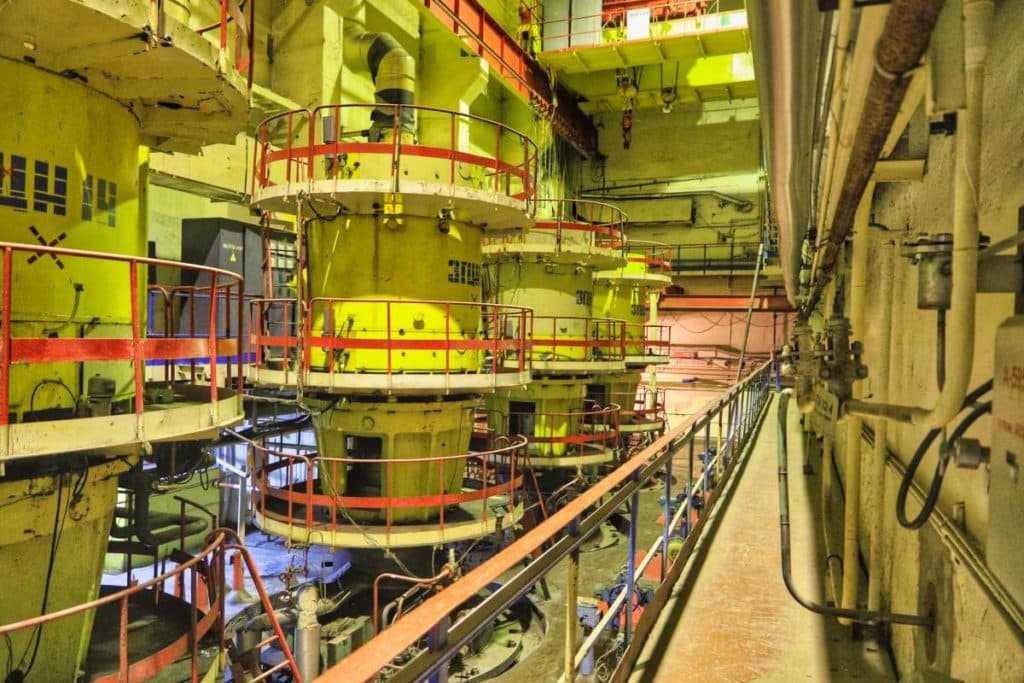
The accident at the Chernobyl nuclear power plant
Even though the safety systems and auxiliary equipment of the first two generations of RBMK reactors were improved more and more in theory, a devastating core meltdown occurred due to an operating and design error during a test on the night of April 25-26, 1986. To stop the nuclear reaction, the fuel rods were inserted into the reactor with graphite tips. But instead of slowing down the reaction, it got completely out of control. The reactor core exploded and almost completely destroyed the surrounding facilities. To date, the accident is considered the largest nuclear accident in history.
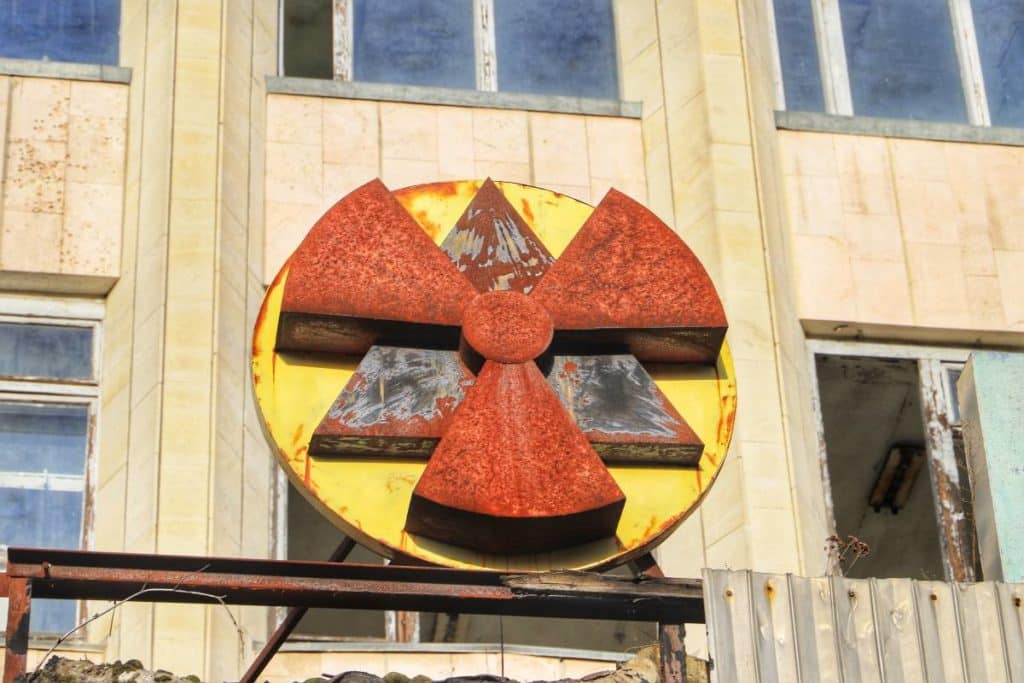
The immediate consequences of the reactor disaster
The reactor disaster had far-reaching consequences. These included both the immediate consequences, such as a huge cleanup operation, and long-term consequences, such as the cancer suffered by many residents of the region. Historians even believe that the cleanup of the damage and aid to the injured contributed significantly to the collapse of the Soviet Union.
Cleanup
The damage to Block 4 and the surrounding area was attempted to be repaired in the following years (or decades), and the surrounding area was divided into a restricted zone. Some areas will remain so heavily contaminated for decades that settlement and use there is not to be expected. Estimates suggest that the restricted zone will not be habitable again for at least a few thousand years. The agricultural land is also unusable.
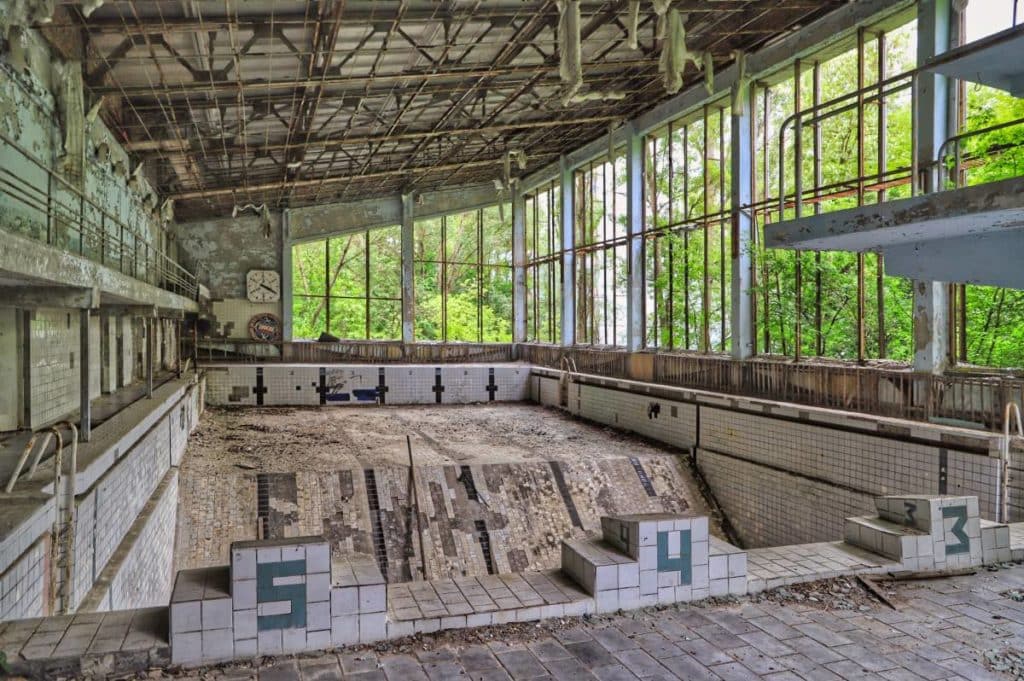
Evacuation
36 hours after the reactor accident, the city of Prypiat was completely evacuated within two and a half hours by more than 1000 buses. Since it was initially assumed that the absence would last 3 days, the residents had only the most necessary things with them. Even though extensive decontamination measures were implemented in the city, a return to the city was not allowed and Prypiat was eventually abandoned.
Some buildings, such as the swimming pool, were used for a short period of time during the coordination of the decontamination of the contaminated zone. A few days after the evacuation, an amusement park was originally supposed to be opened in honor of May Day, but this never happened. Since then, the ensemble with Ferris wheel and other rides has been an impressive memorial to the immanent dangers of the civilian use of nuclear power.
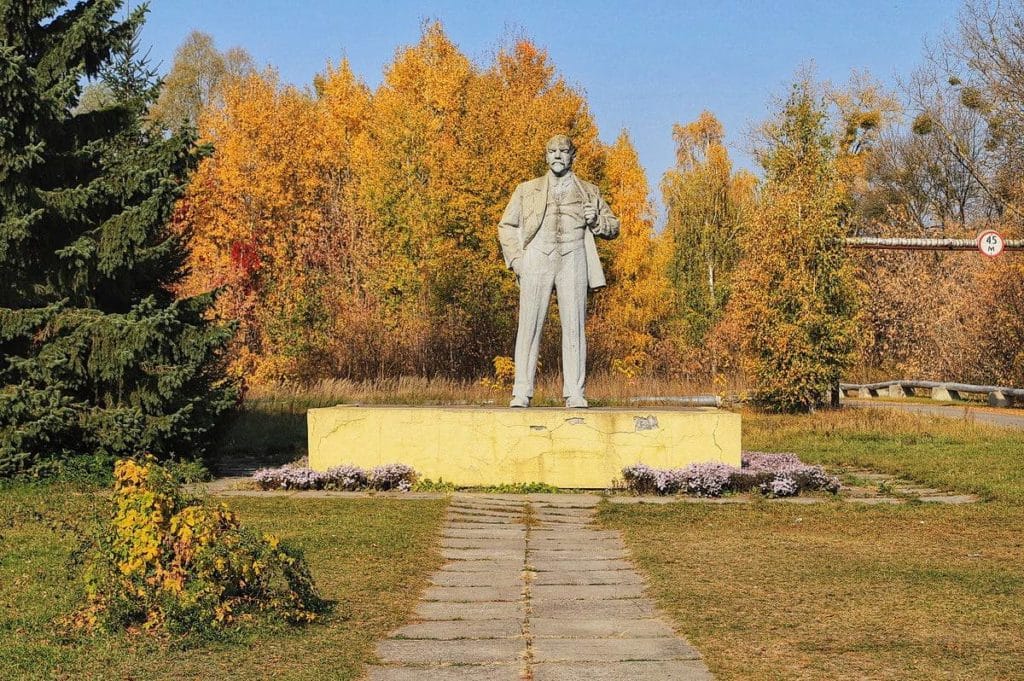
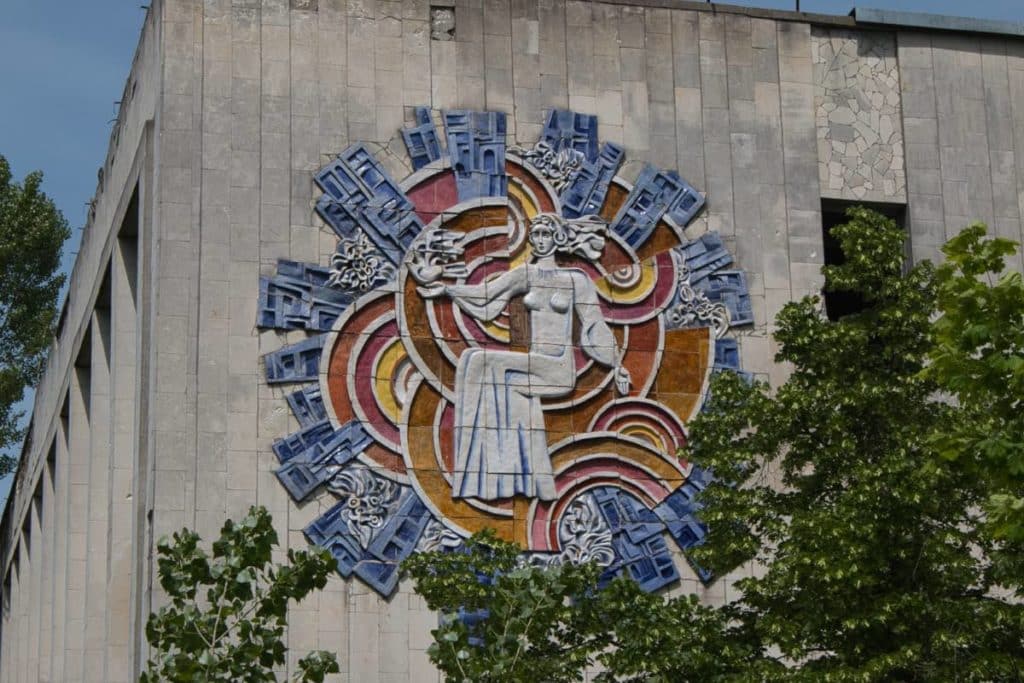
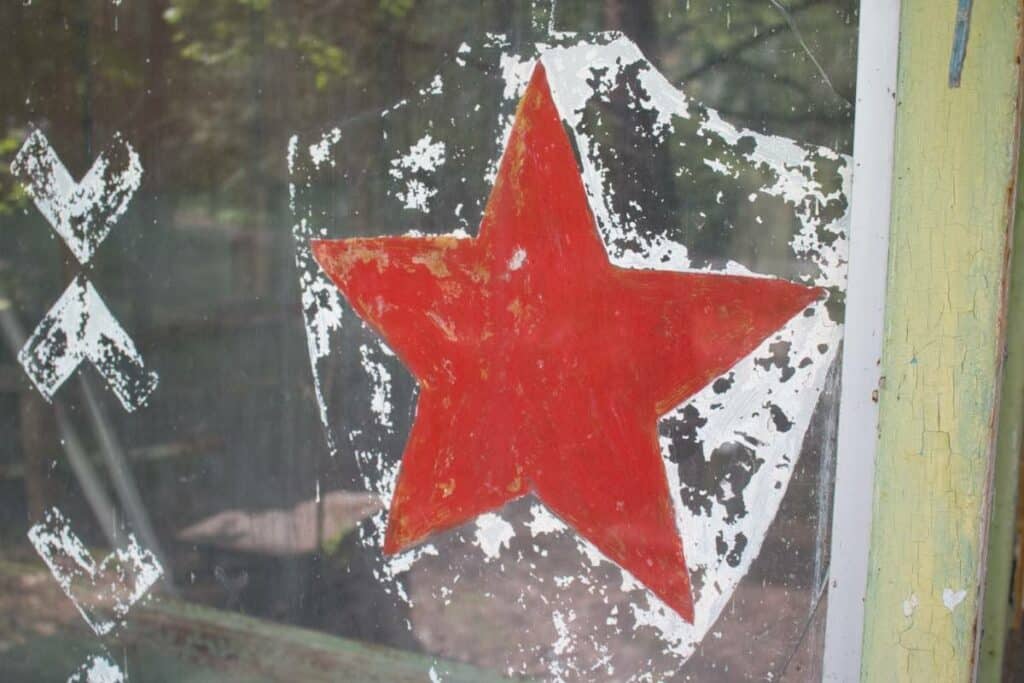
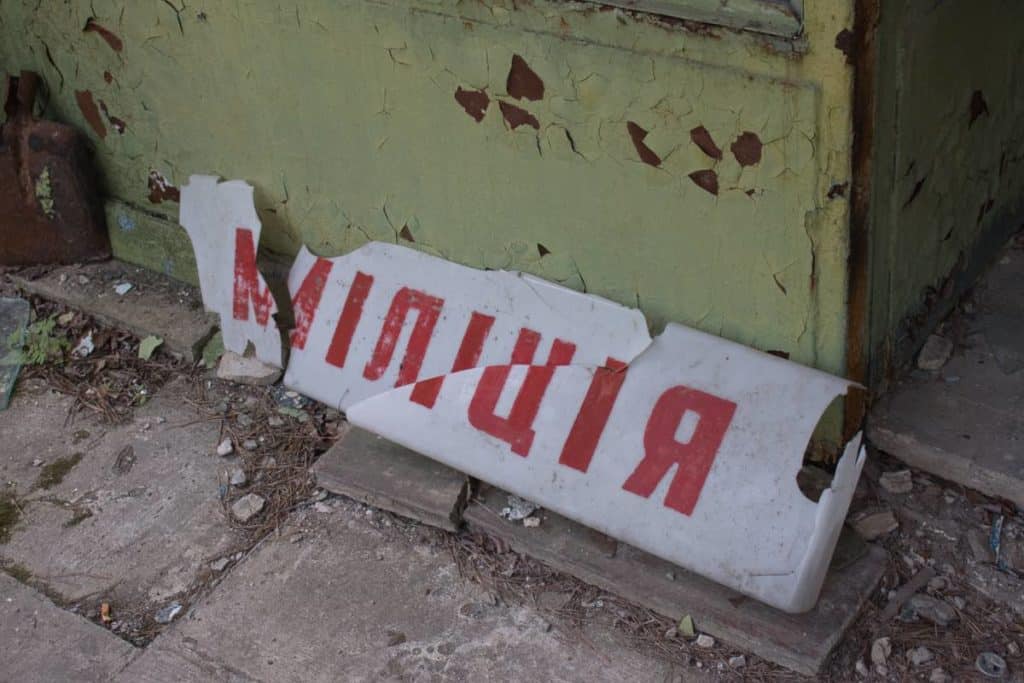
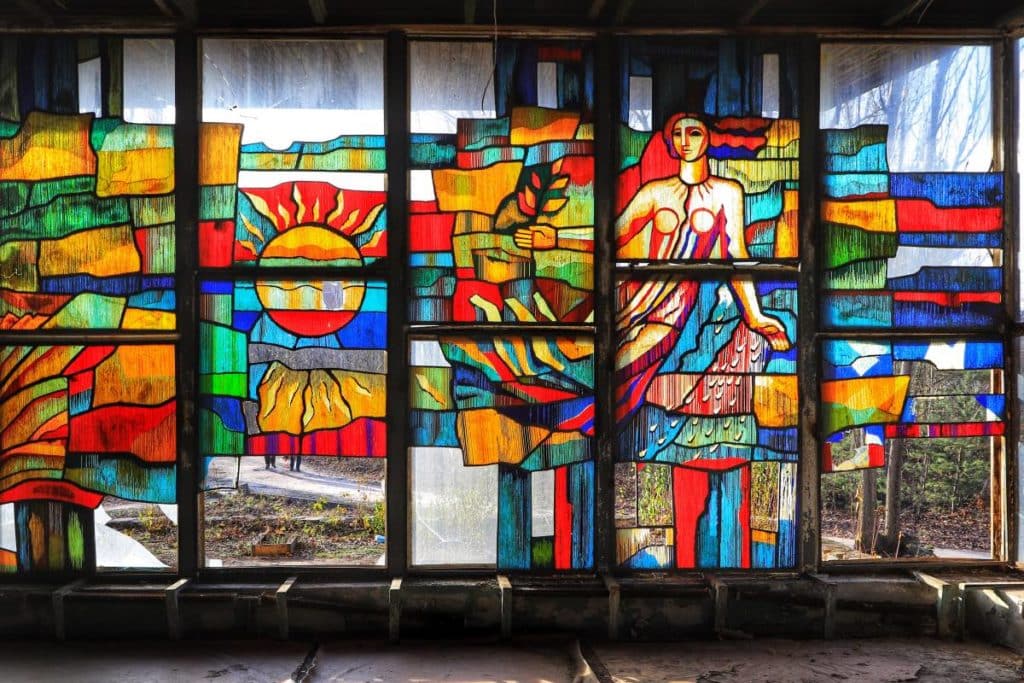
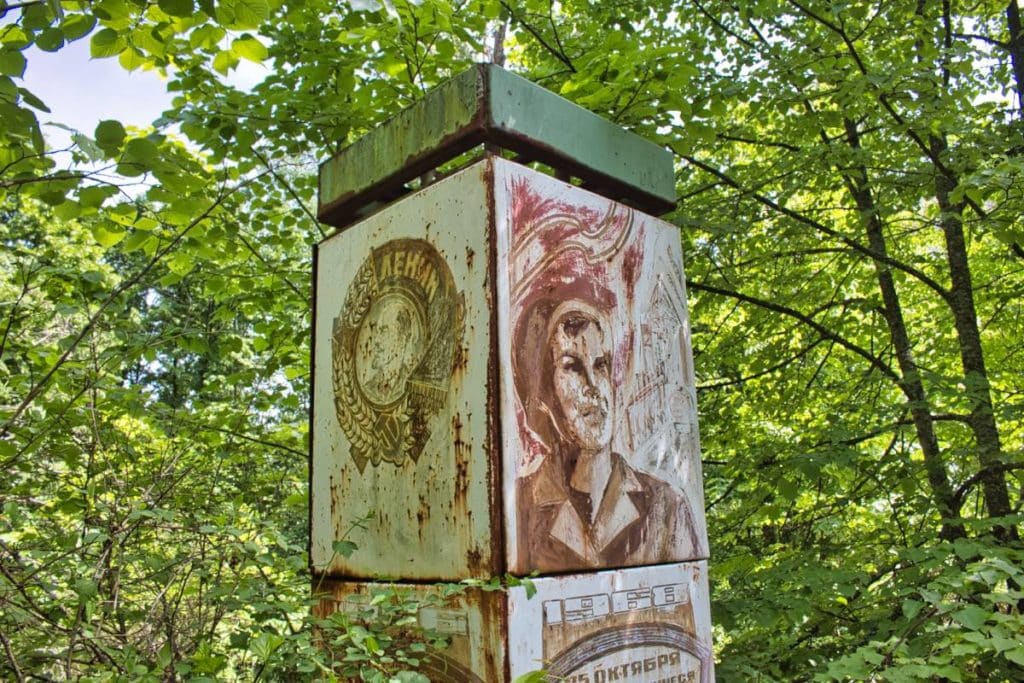
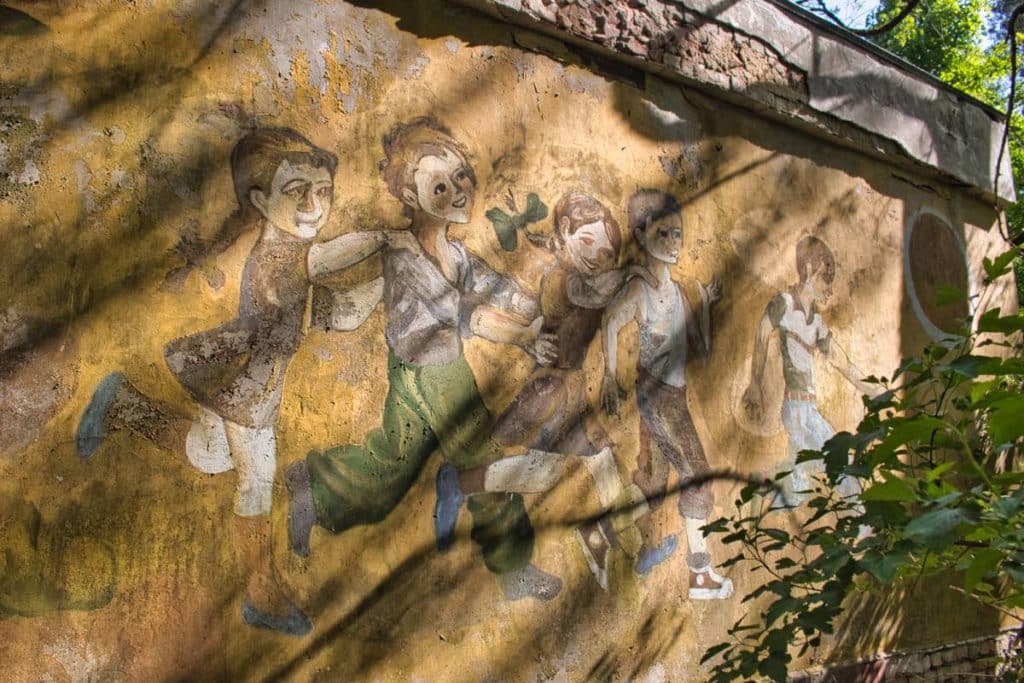
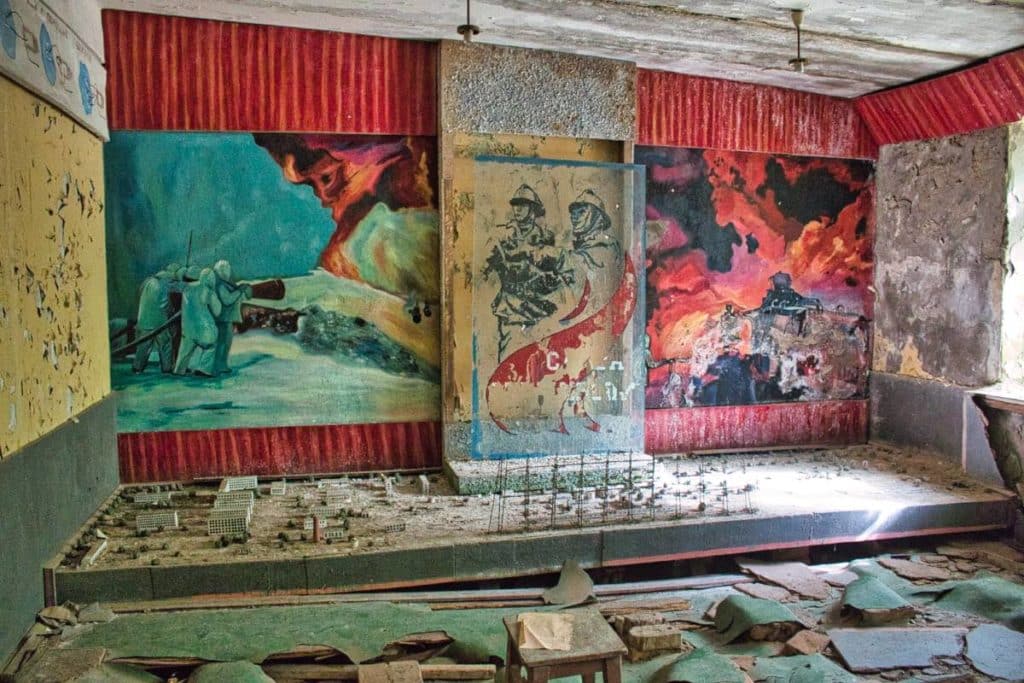
Establishment of the Chernobyl Exclusion Zone
The Soviet authorities determined that the exclusion zone around the destroyed reactor should cover 30 kilometers (17 miles). 2.600 square kilometers (1.000 square miles) were thus closed off – an area as big as the US state of Rhode Island and or the country of Luxemburg in Europe. Prypiat was evacuated just 36 hours after the accident. On May 2, 1986, a week after the explosion of unit 4 of the power plant, the last of the remaining families were put on buses and taken to more distant places. All the inhabitants of this zone were relocated. This affected more than 116,000 people.
Only years later, many of them were given a new home in Slavutych. The location of the village of Chornobyl outside the more strictly shielded 10-kilometer zone, which includes Prypiat, led to the renovation of many buildings there. Today, only temporary workers and employees of the nuclear power plant, members of the police and fire departments, and other workers necessary for the maintenance and safety of the power plant officially live here. Forest fires or adverse weather conditions still pose a major threat to safety in the restricted zone.
Shutdown of the remaining reactors
Hard to believe, but the Soviet government restarted reactors 1, 2, and 3 after the accident at reactor 4 and after the subsequent cleanup was completed. The Soviets assumed that radiation exposure to workers would not be that high. It was not until the European Union made Ukraine a concrete offer of assistance to shut down the reactors in 1995 that the remaining three reactors were gradually taken off line by June 2000. Since then, there have been no operating RBMK-type reactors in Ukraine.
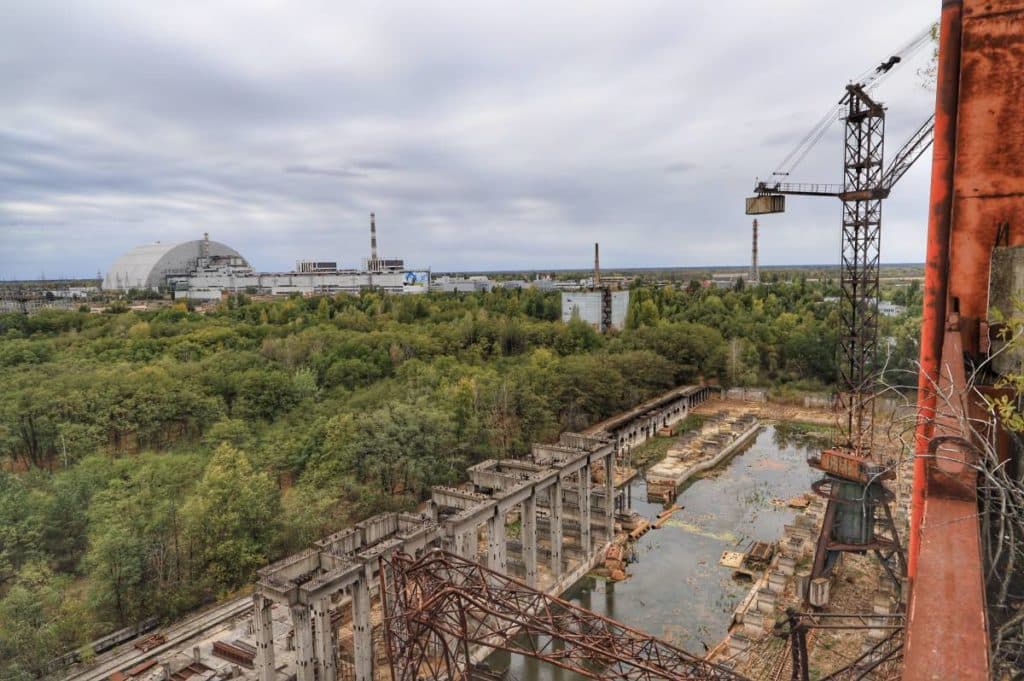
Construction of a protective shell for the destroyed reactor
Already in the months following the reactor accident, a first protective shell was built for the destroyed unit 4. This was intended to provide temporary protection for the building so that no further particles from the accident reactor could escape into the environment. Experts estimate that there are still 150 to 180 tons of highly radioactive material in the reactor. Since this protective cover also became more and more fragile over the years, a new solution was needed.
From 2010 to 2016, a new protective shell for the reactor was built, which was first created next to it and then slid over the old sarcophagus on tracks. It has been officially in operation since 2019 and already graces many photos of visitors to the Chernobyl Exclusion Zone. It is supposed to protect the surrounding area from radiation from the reactor for at least 100 years.
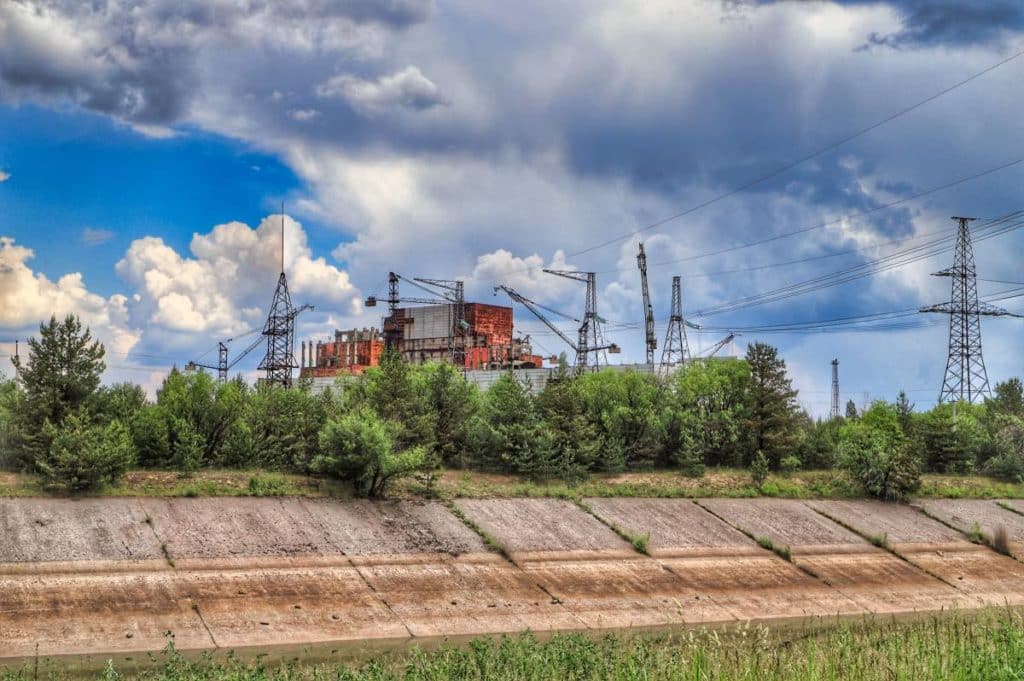
Construction stop for units 5 and 6 and other nuclear power plants
One of the most important consequences of the Chernobyl accident was that the construction of further nuclear power plants was stopped. Two more reactors were also to be built in Chernobyl itself. The ruined construction site for reactor 5 can also be visited today. Unit 5 was almost finished and was supposed to start operation already in autumn 1986. Unit 6 was half completed. Construction continued, but had to be stopped in 1988 due to high radiation levels. After the collapse of the Soviet Union, the plans for further construction were finally abandoned by the Ukrainian government.
Originally, 26 RBMK reactors were to be built on the territory of the Soviet Union. However, the Chernobyl disaster not only stopped the construction of the two additional units at the site itself, but also all other construction projects were discontinued from the end of the 1980s. In Ukraine, for example, the project for a nuclear power plant near Odesa and another on Krym were also completely abandoned. In Russia, the RBMK reactors continue to operate to this day. The last RBMK reactor is not scheduled to be shut down until 2034.
Things to see in the Chernobyl Exclusion Zone
During most of the visits to the Chernobyl Exclusion Zone, the tours go to different places. Often it also depends on the wishes of the participants and on the possibilities, because sometimes there are visits of ministers or there was an incident shortly before, whereupon the tours are changed according to the situation. In order to see the best spots for you, it is therefore practical to know the best sights in the Chernobyl Exclusion Zone in advance. Therefore, we have already listed them for you.
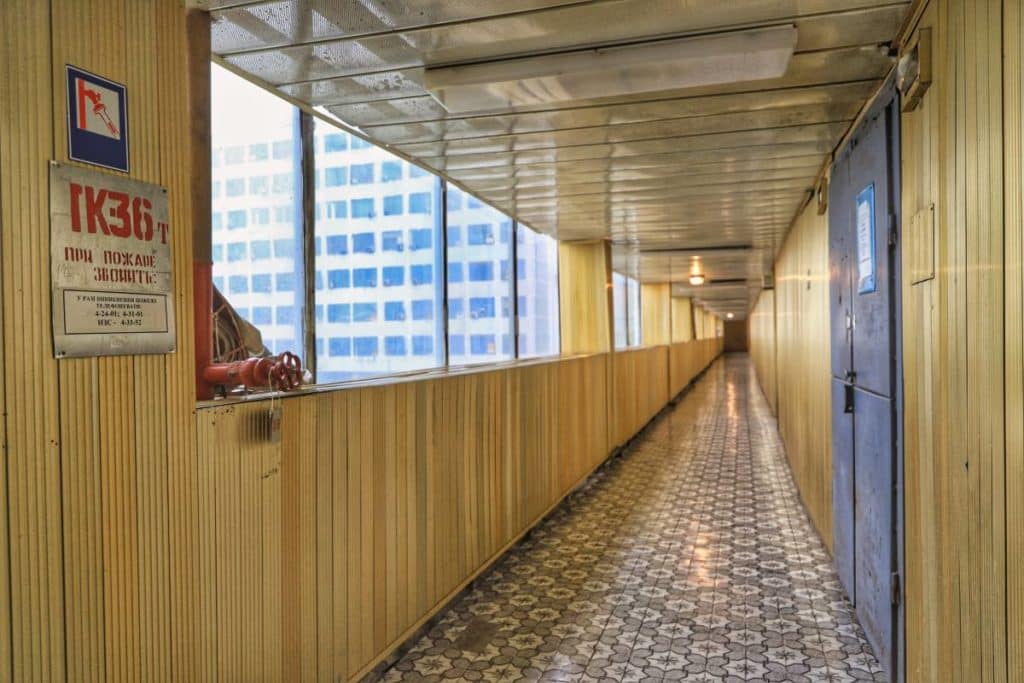
Ruin of reactor 4 and sarcophagus
Reactor 4 is the most important sight in the Chernobyl Exclusion Zone. This is where the accident happened, about which the world knows more again, especially since the broadcast of the HBO series Chernobyl. The reactor building itself is located inside the protective shell. However, particularly brave visitors can take special tours to visit the control center of reactor 4. This is the original site where many of the fateful decisions, such as that of chief engineer Anatoly Diatlov, took place. This is also where the famous AS-5 emergency button was located, the triggering of which led to the explosion. If this is too scary for you, you can also visit the control rooms of reactor 1, which is identical in construction and in much better condition.
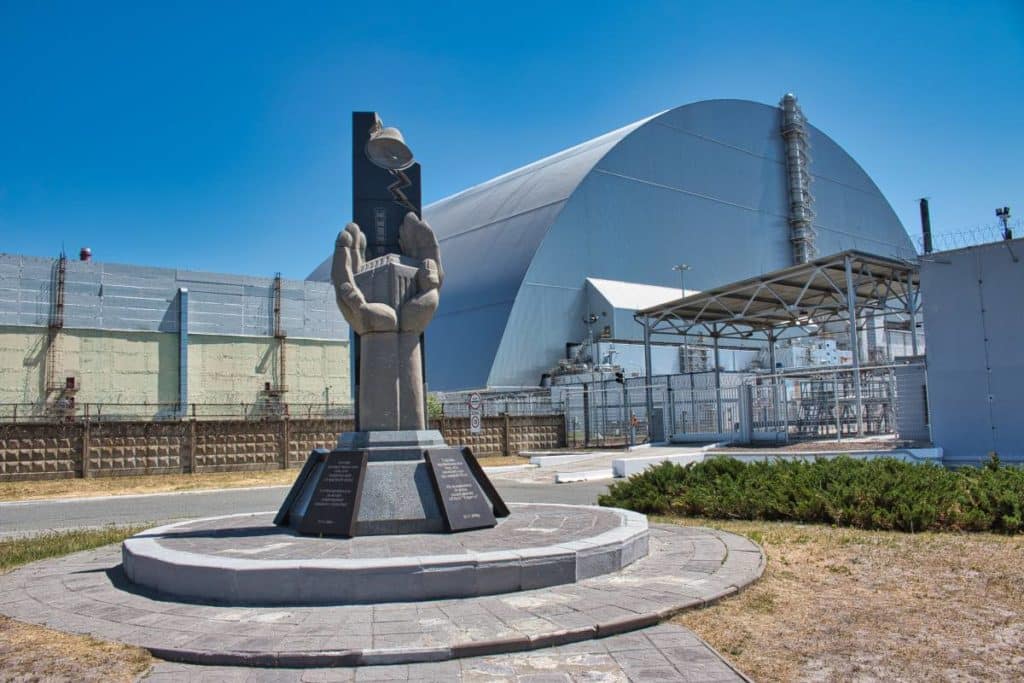
On each day tour there is a stop at the monument in front of reactor 4. Here you can take photos also in front of the background of the new protective cover and get a lot of information about the reactor accident. Ruins of reactors 5 and 6 with cooling pond
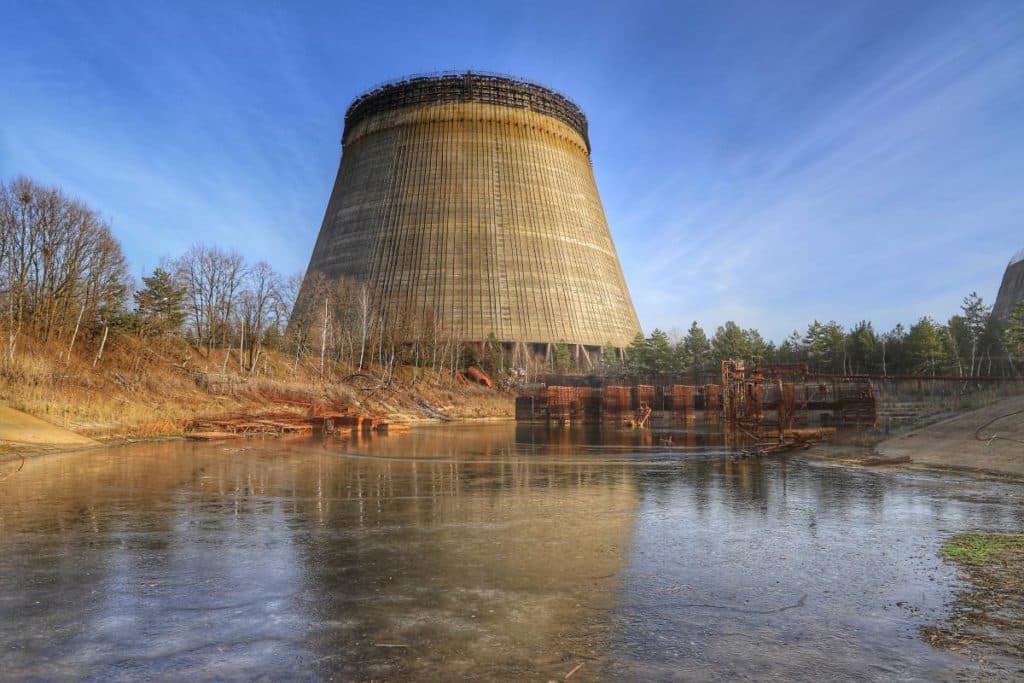
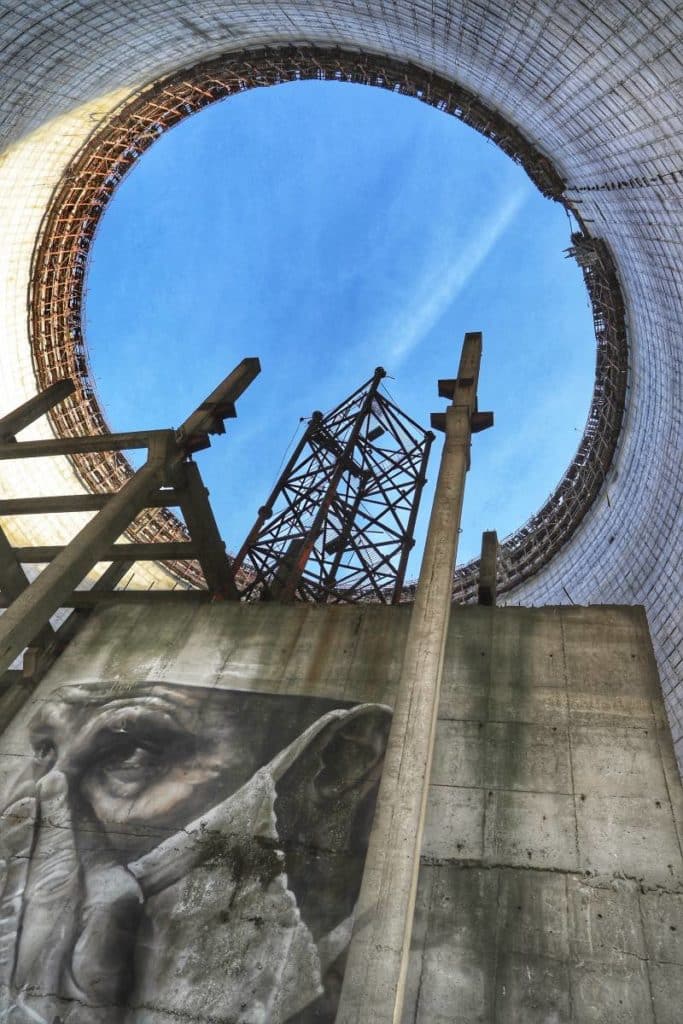
Since the construction of reactors 5 and 6 was canceled, the ruins of the units are still standing on the spot as they were at that time. Especially the cooling tower of unit 5 is impressive and offers you interesting insights. The construction cranes have not moved for a long time and also show that the government of the Soviet Union was still planning to finish the reactor.
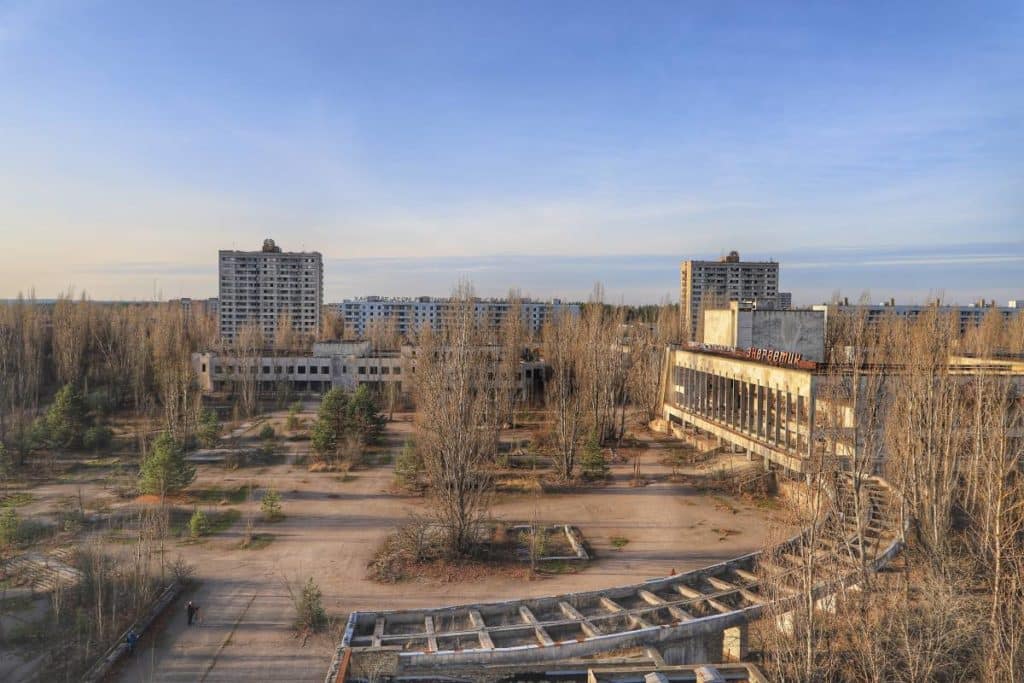
Ghost town Prypiat
A visit to the present-day ghost town of Prypiat is an impressive experience. For more than 30 years, the buildings have stood empty and nature is gradually reclaiming the built-up areas. Almost 50,000 people lived here on the day of the reactor accident. Today Prypiat is a ghost town. Depending on the booked tour, only short flying visits or longer stays take place here. But be careful. It is not allowed to enter the buildings. The guides of the tour companies are not supposed to let anyone into the buildings, but de facto there are many guests in the buildings.
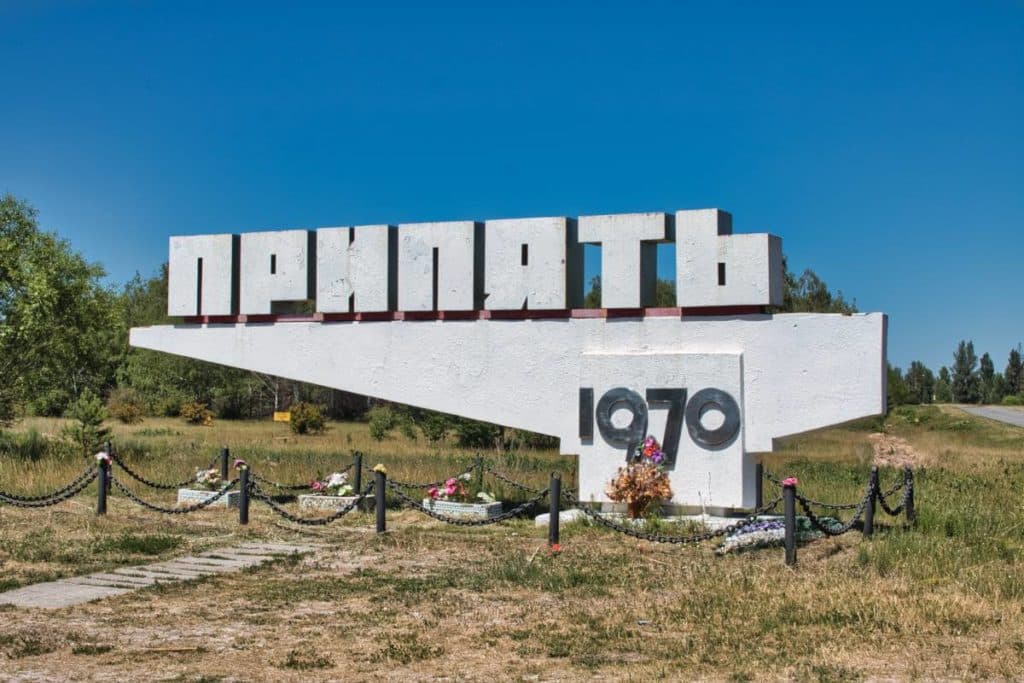
Entrance sign to Prypiat
On the way to the city of Prypiat, all tourist buses stop at the entrance sign of the city of Prypiat. The modernist sign, showing the year of foundation 1970 and the name of the city, is the ultimate souvenir photo for all visitors to the zone.
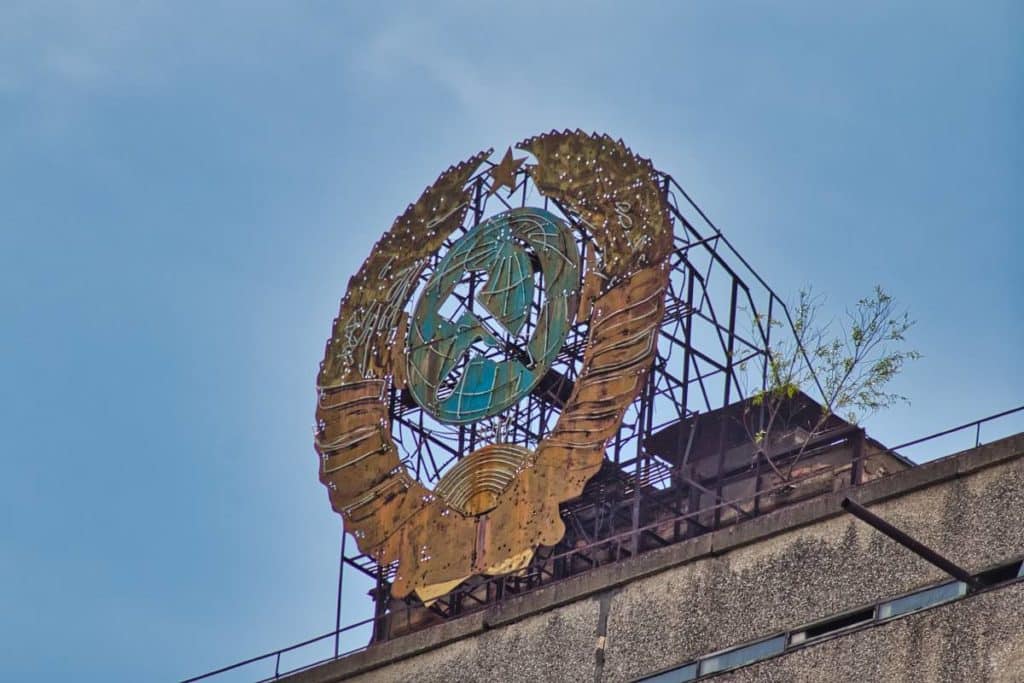
High-rise buildings in Prypiat
The most beautiful thing during a visit to Prypiat is the view from the balconies and roofs of one of the skyscrapers. The buildings rise up to 16 stories into the sky above the ghost town. One of them still bears a huge emblem of the Communist Party of the Soviet Union. From here you can look directly at the reactor, which stands only five kilometers from the city.
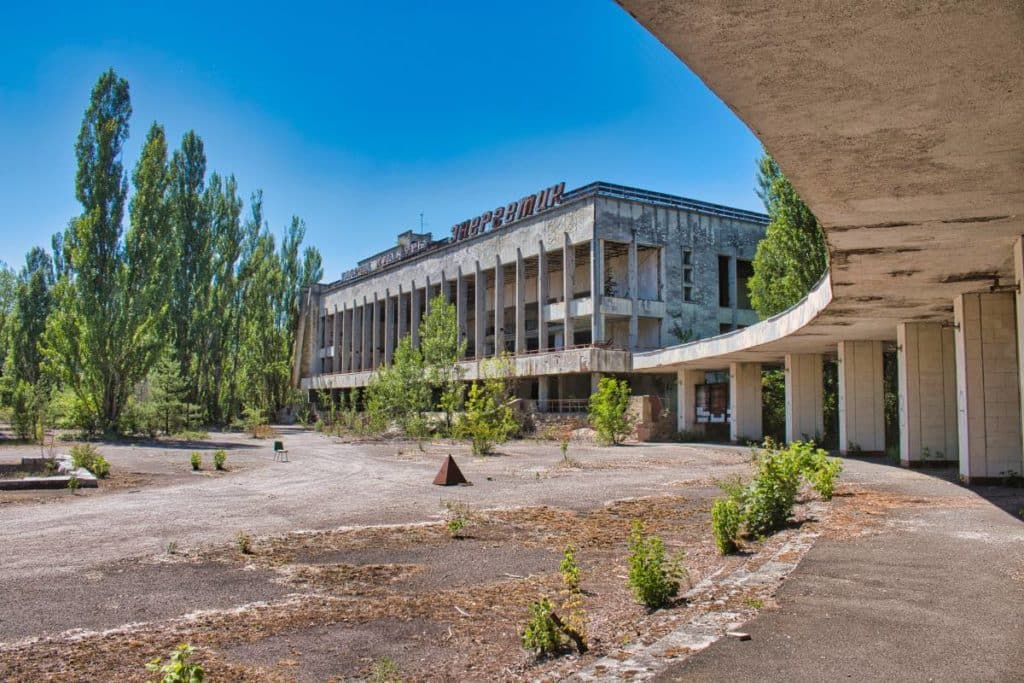
Palace of Culture Energetik and Hotel Polissya
In the Central Square of the city stands the Palace of Culture Energetik, which was built as an event house for the workers and residents of the city. All kinds of cultural events were held here. The arch that spans between the Palace of Culture and the Pollisya Hotel is one of the most famous landmarks of the city.
Self-service supermarket
Also on Central Square is the former Prypiat supermarket. Such facilities were rare even in the Soviet Union in the 1980s. Here, residents could help themselves to the shelves and pay as they walked out. In the Soviet Union, where people usually shopped in stores with a counter, this was a real novelty. The fact that there was a supermarket in Prypiat also shows the importance of the city with its nuclear power plant.
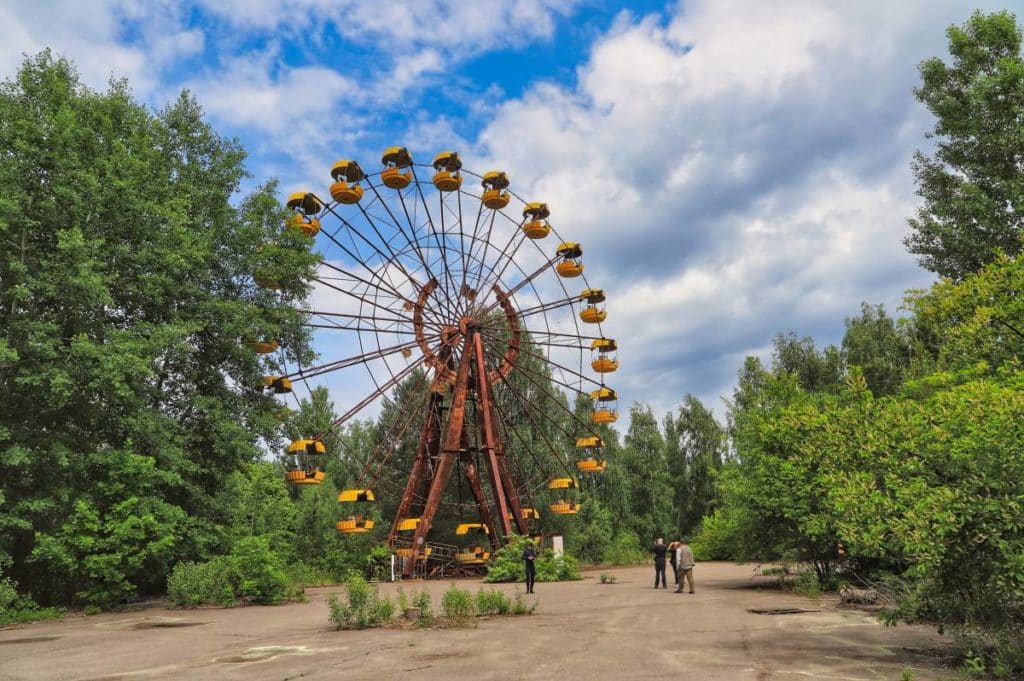
Amusement park
Another symbol of Prypiat is the amusement park with the Ferris wheel, a bumper car and other small carousels. It is one of the most tragic sites of the nuclear disaster and its aftermath, because the carnival was supposed to open on May 1, 1986, so it never went into operation and no child has ever officially ridden on the Ferris wheel. Also be careful here: the gondolas of the Ferris wheel are highly contaminated with radiation.
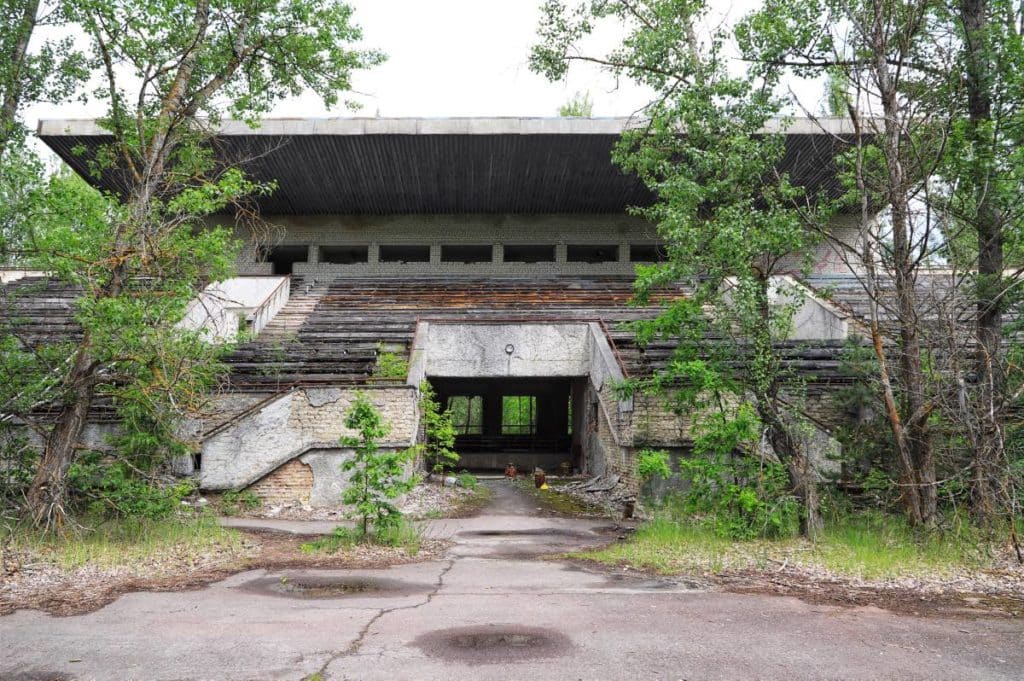
Avangard Stadium
Besides the amusement park, the Avangard stadium was also to open on May 1, 1986. Consequently, matches of the Prypiat soccer club FK Budivelnik (Russ. Stroitel) Prypiat were to take place here. The first match in front of up to 5,000 possible spectators was scheduled for May 9, 1986 against Shakhtar Oleksandria. It did not come to that either. Today, the lawn is a small wooded area and the stands and outbuildings continue to deteriorate.
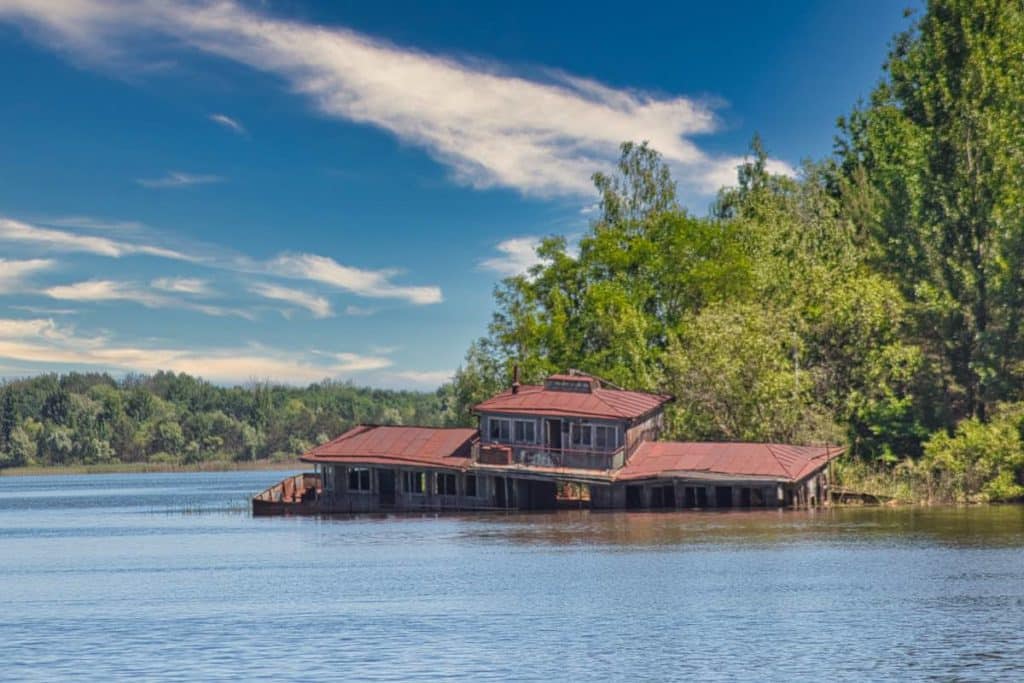
River port with fast ferries
Until the Chernobyl disaster, in order to get to the republic’s capital in Kyiv, there was even the possibility of taking a speedboat across the Prypiat and Dnipro rivers, in addition to bus and train connections. The trip also took two hours and commuted between the river ports of Kyiv and Prypiat at more than 60 kilometers per hour. In Prypiat, passengers got off at the river port, which is one of the stops on most tours today. From here you also have a nice view of the cargo port with its cargo cranes.
Kindergartens and schools in Prypiat
There were 20 kindergartens and schools in Prypiat, some of which have already collapsed. But in some of the schools you can go on a tour and see the classrooms. In some buildings you can still see furniture and old textbooks. In some of them, there are still plaques on the walls admonishing the pioneers.
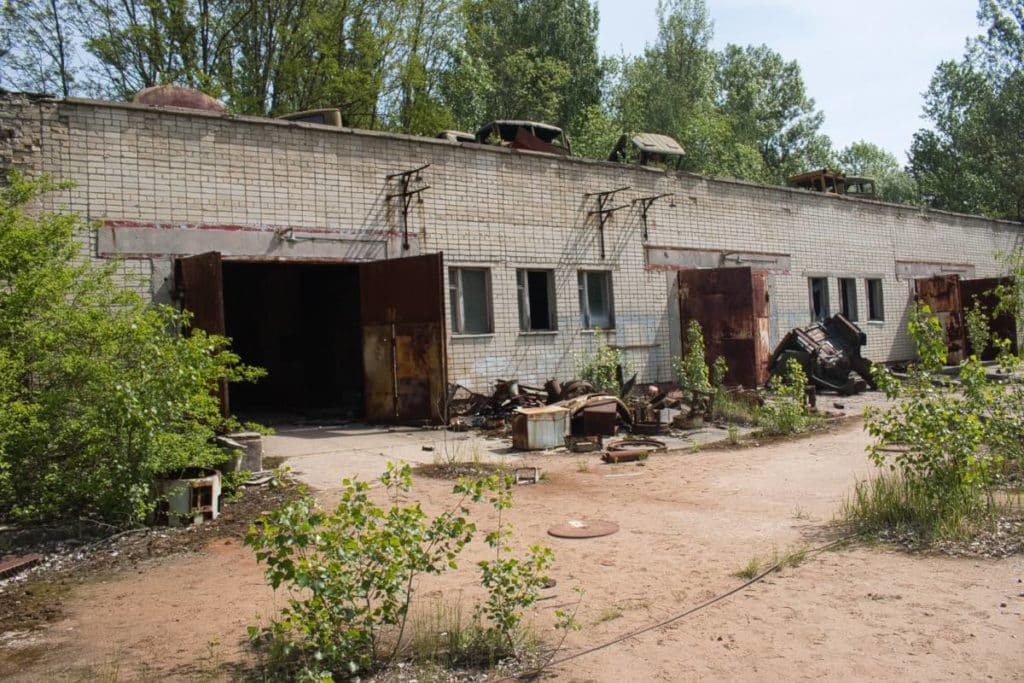
Jupiter Factory
The Jupiter factory produced mainly components for cassette recorders. Rumor has it that components for military equipment were also manufactured here. After the reactor accident and the establishment of the Chernobyl Exclusion Zone, the factory was used on a much smaller scale for testing decontamination measures. There are also some old wrecked vehicles on the factory premises.
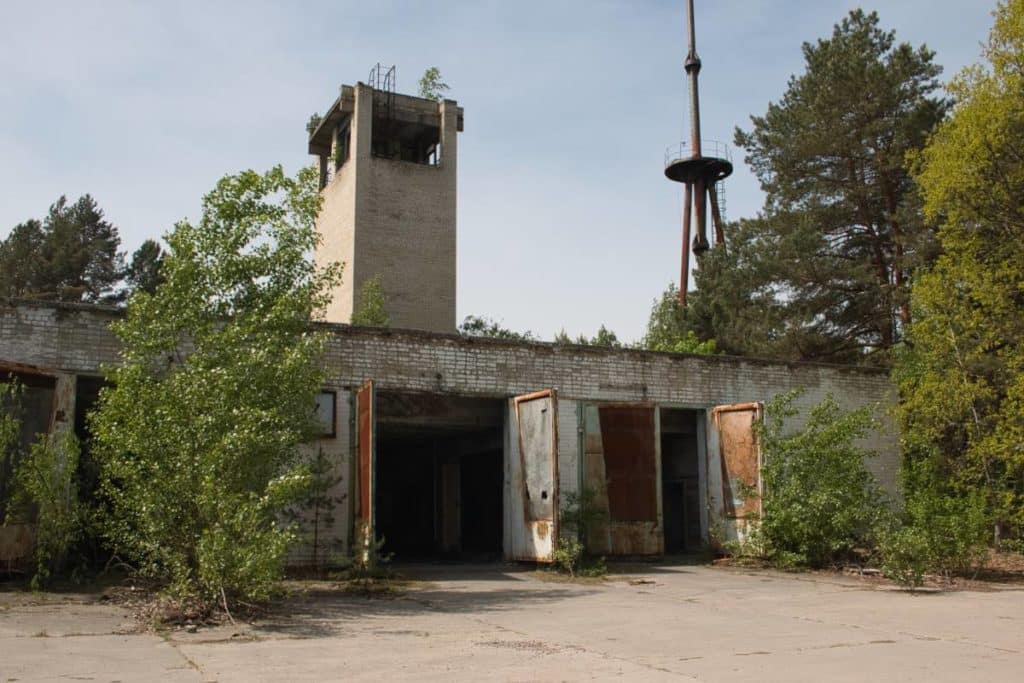
Fire station
The Prypiat fire station was home to the firefighters who tried to extinguish the fire in the reactor immediately after the reactor disaster. Many of the firefighters were exposed to huge doses of radiation in the process, which ultimately led to their deaths.
Hospital with protective gear
Many of those contaminated, including firefighter Vasil Ignatenko, known from the Chernobyl series, who was first treated here before he and five of his comrades, as well as other victims of radioactive contamination, were flown to a special clinic in Moscow. The basement of the clinic has since been sealed, as it is here that equipment belonging to the first responders to the disaster is stored, which was repeatedly visited by tourists and the stalkers traveling illegally in the zone.
Bridge of Death
Another sight from the series is the Bridge of Death, which crosses the railroad line. In the Chernobyl series, passersby are shown looking at the power plant from here, while a blue flame rises from the ruins of the reactor. It is claimed that this caused many people to become highly contaminated and subsequently die of radiation sickness. However, these reports are not substantiated. Nevertheless, the bridge is a famous photo motif.
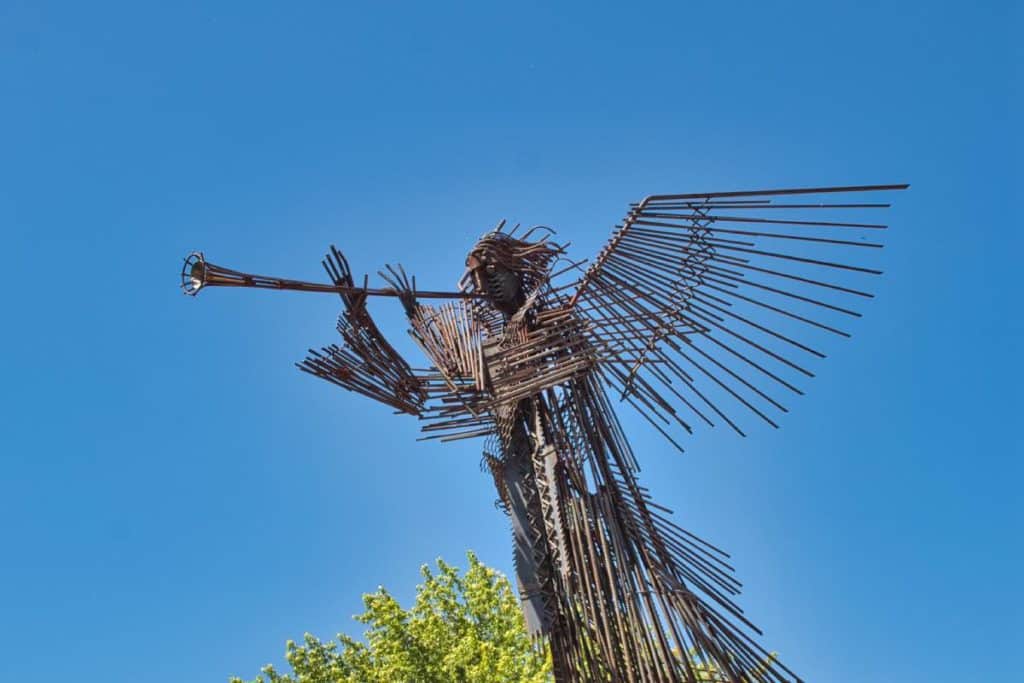
City of Chornobyl
Often the two cities of Chornobyl and Prypiat are confused with each other. After all, the power plant was given the name of the already existing town. However, Prypiat, which was the actual settlement for the power plant workers and their families, is much closer to the power plant. However, the town of Chornobyl was already the district capital of the Chornobyl Rajon before that.
It is also located in the Chernobyl Exclusion Zone, but not in the 10-kilometer zone, which is why the city is still inhabited by workers during their working weeks. The city also has a number of monuments and many buildings are still being renovated, which is why Chornobyl is not as much of a ghost town as Prypiat.
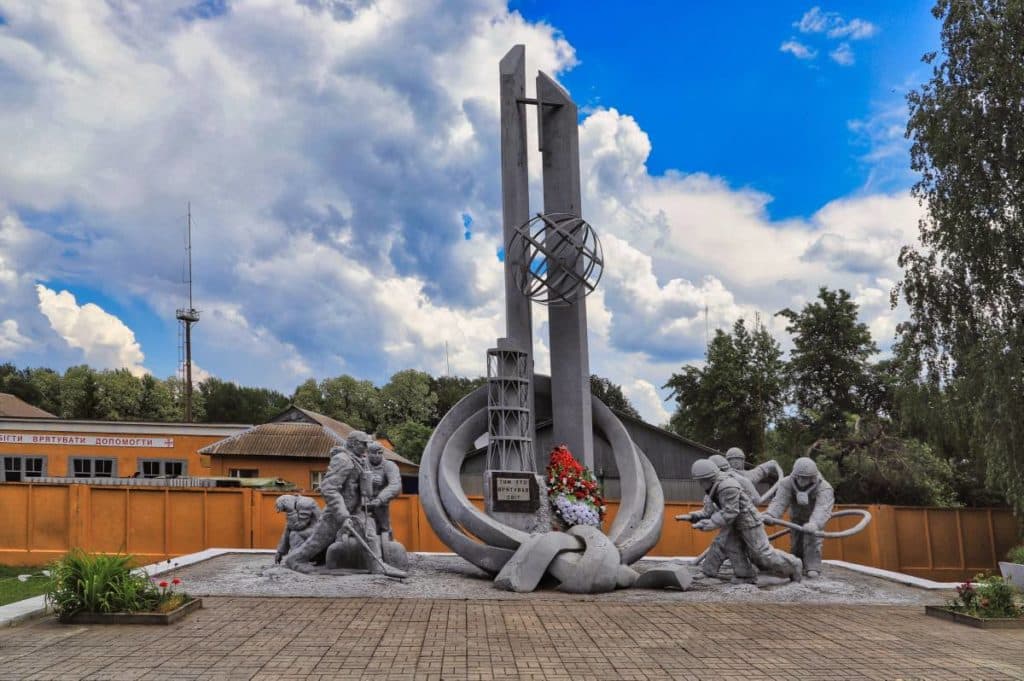
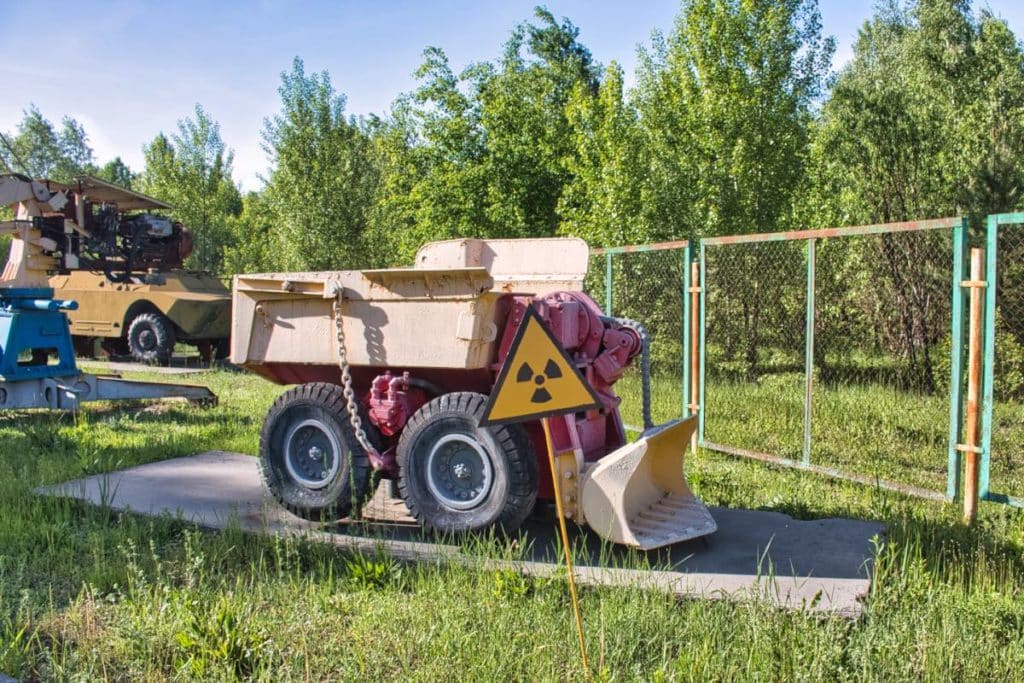
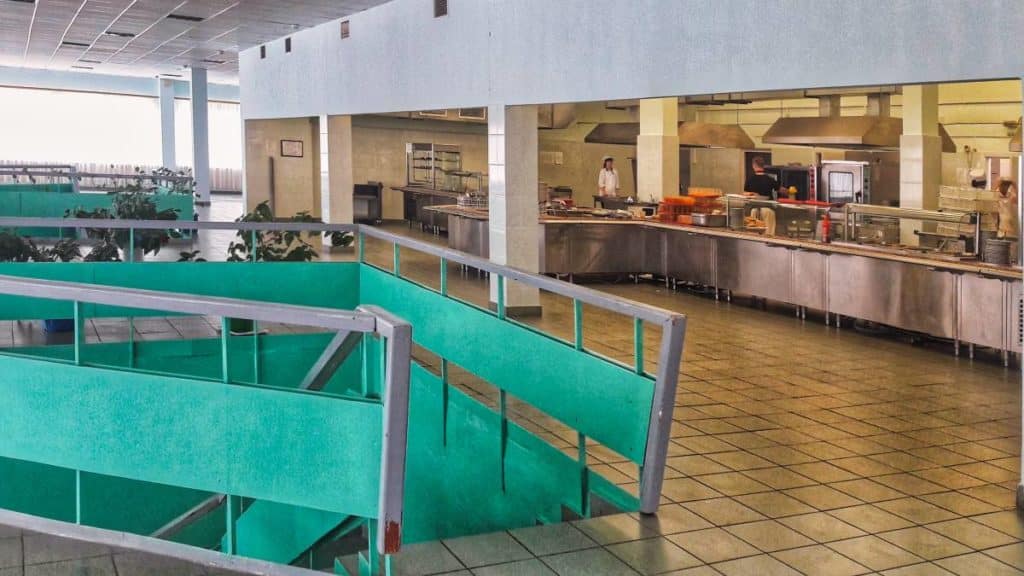
Chornobyl was evacuated only on May 2, but since then it has also been closed to regular residents. However, there are some sights in the city. The Monument to Those Who Saved the World commemorates the liquidators who cleaned up the region after the disaster. A cemetery of abandoned villages commemorates all the small communities that are now in the Chernobyl Exclusion Zone because of the nuclear accident, making them uninhabitable. Almost every visit also leads to the canteen where there is typical Ukrainian canteen food during the day tour.
Red Forest
The so-called Red Forest is one of the most contaminated places in the Chernobyl Exclusion Zone. After the explosion in the reactor and the subsequent fire, large quantities of radioactive particles were dispersed by the wind. Since the wind was pointing in the direction of a nearby forest, the forest was particularly contaminated. Even today, this is clearly noticeable, when suddenly all the Geiger counters that had been brought along start beeping when driving through the adjacent road. Experts strongly advise against staying in the Red Forest.
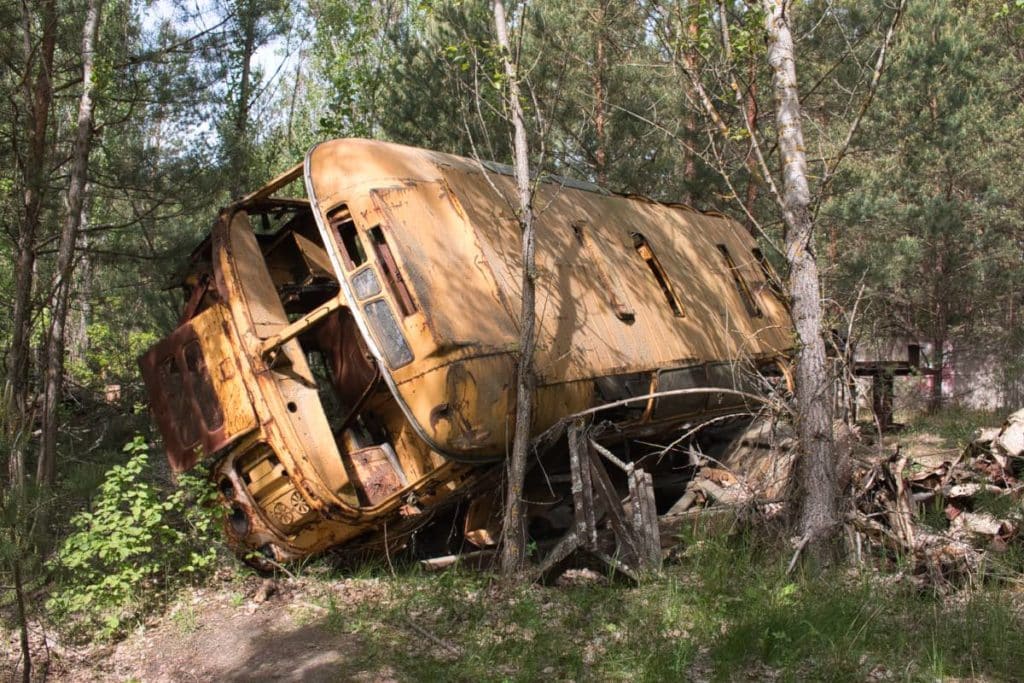
Technology Cemeteries
Much of the technology, especially fire trucks and cranes and even expensive robots used for cleanup, subsequently had to be disposed of. Most of it was taken to scrap yards, some of which were looted in the meager 1990s. Until a few years ago, visitors could still go to the engineering graveyards, but the Ukrainian government has since closed them due to excessive radiation levels.
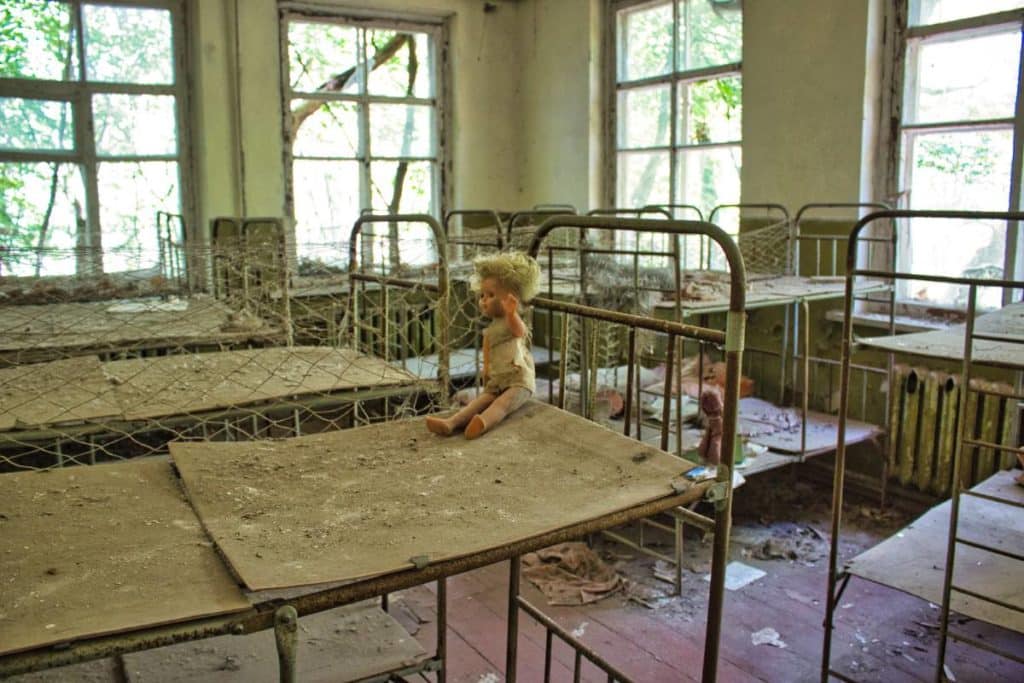
Villages in the Chernobyl Exclusion Zone
Dozens of villages in the exclusion zone have been abandoned because of the nuclear disaster. Most of them receive almost no visitors. The exception is the village of Kopachi which is located on the route from the Dityatki checkpoint at the entrance to the 30km zone and the power plant. All houses in the village were demolished after the establishment of the exclusion zone. Only a kindergarten and a monument to the soldiers of the Second World War are still standing. They are the first stop on most tours on the way to the power plant.
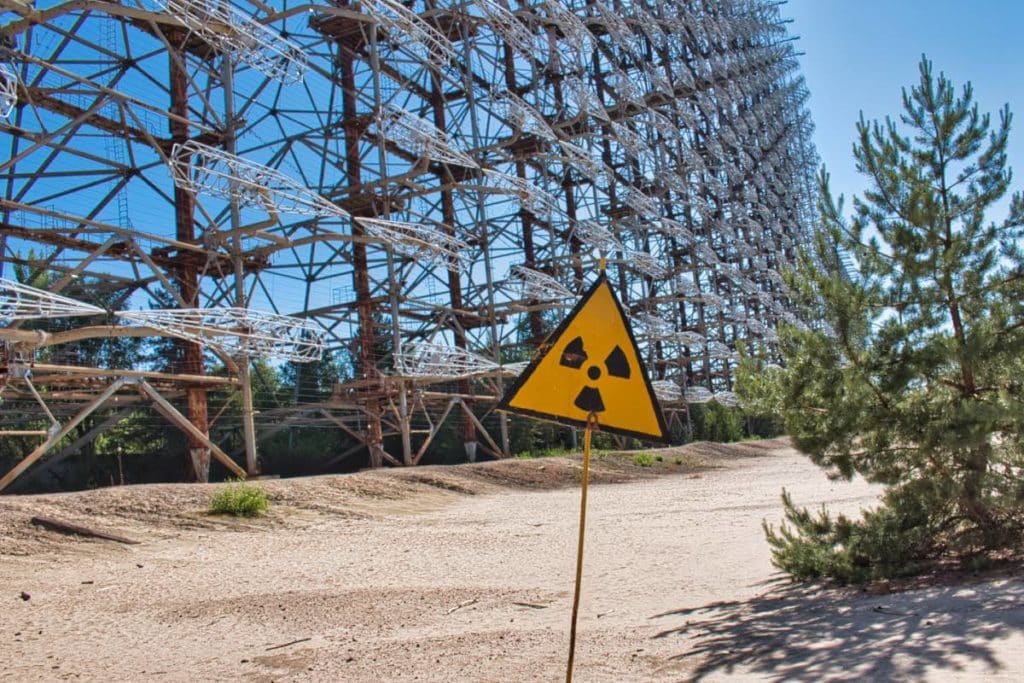
Duga radar with station
The Duga radar station, also known as Woodpecker, is located in the middle of the forest about 10 kilometers (6 miles) south of the Chernobyl nuclear power plant. The huge antenna is an over-the-horizon radar that the Soviets used to detect missiles in the event of an incoming nuclear attack so they could retaliate immediately. The antennas, up to 150 meters high, still stand today and a stop here is a must when visiting the Chernobyl Exclusion Zone.
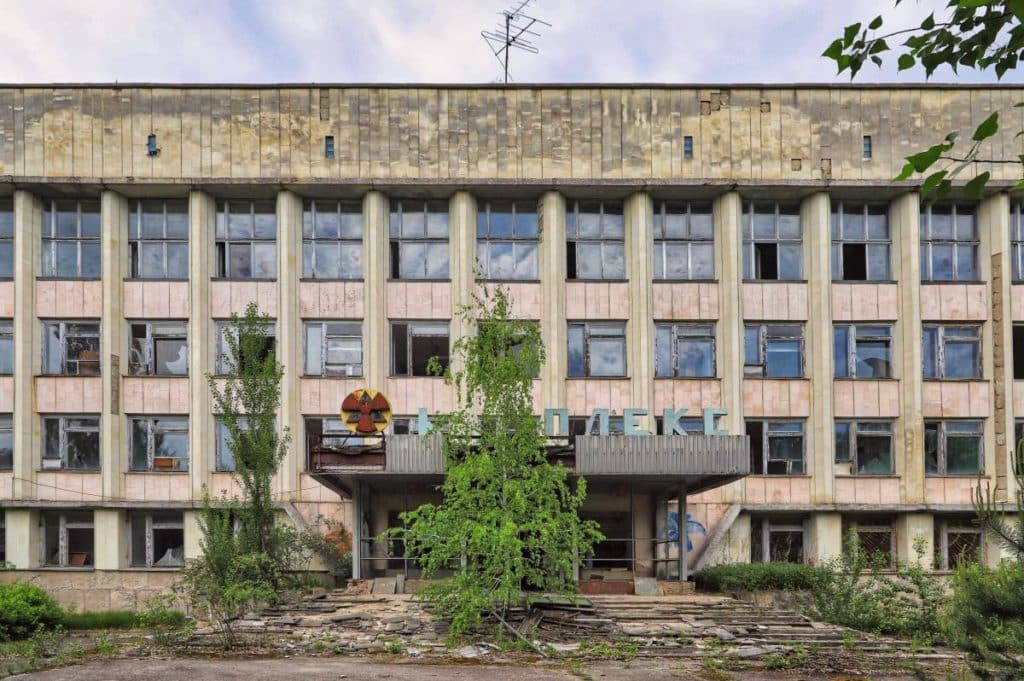
FAQ on the Chernobyl Exclusion Zone
A visit to the restricted zone is only possible via guided tours. Nevertheless, we would like to explain some of the most important questions concerning a visit to the restricted area.
Is it possible to visit Chernobyl?
The closed zone around Chernobyl can be visited on fixed routes with a licensed guide. Different variants lead, for example, to the abandoned ghost town of Prypiat, across the site of the giant DUGA radar or through the city of Chornobyl itself.
Is a visit to Chernobyl safe?
When you enter the 30-kilometer zone, you will be informed about all the rules of conduct. These include: within the zone nothing may be touched, dug up or picked up. If you follow these rules, it is safe to visit the closed zone.
How to travel to Ukraine?
Several airlines fly to Ukraine from different international airports according to a regular schedule. In addition, Lviv and Kyiv can also be reached by scheduled buses from many European cities.
How to travel to Chernobyl?
In Kyiv, numerous companies have specialized in visiting the closed zone with tourists. They organise day and multi-day trips to the closed zone with different destinations inside the zone. We can recommend to book via this portal.
Can you visit Chernobyl without a guide?
Visiting the closed zone is possible only with a licensed guide. There are so-called stalkers who visit the zone illegally. However, this is punished by the authorities and is also dangerous, as there are still highly contaminated areas in the restricted zone.
Cost of a Chernobyl tour
The cost of an excursion to the restricted zone varies depending on the organized group size of the operator. Day tours start at 99 euros per person and 2-day tours are 279 euros. The smaller the group, the higher the experience but also the respective tour price.
How long to stay in Chernobyl?
For a first impression, a day excursion to the closed zone is sufficient. For fans of lost places who want to discover and photograph as much as possible, at least two days should be planned.
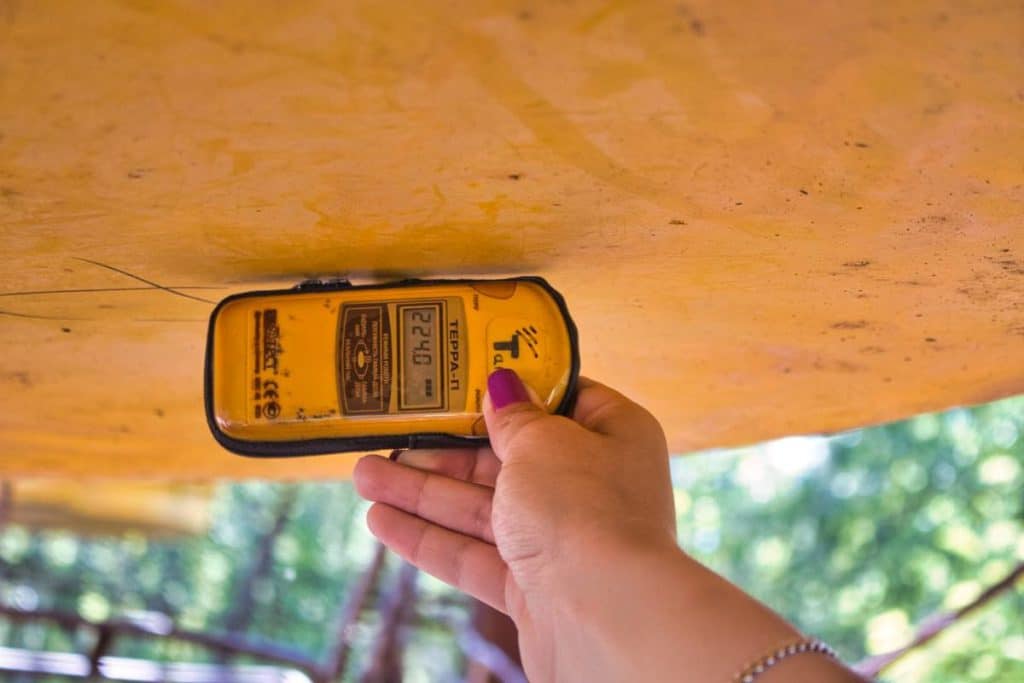
Do I need a Geiger counter?
With almost all tour operators, a personal Geiger counter can be optionally booked in addition to the tour costs. It is not necessary for a visit. Nevertheless, it is interesting to see how high the radiation is in some of the places in the Chernobyl Exclusion Zone.
How to dress in Chernobyl?
In summer and winter, the closed area can be visited only with long clothes. Since you will be outside the vehicles a lot during the tour, you should always be prepared for a change in weather. If you visit the zone in winter, keep in mind that temperatures can drop as low as -25 degrees from November to April. So dress extra warm during these months and check the weather forecast.
Life in, around and with Chernobyl today
The reactor accident permanently changed the lives of many hundreds of thousands of people. The whole of today’s Chernobyl Exclusion Zone was depopulated. Only a few people returned illegally. And even those who were only in the exclusion zone for a short time, some of them still suffer from it to this day.
The Illegal Returnees – The Babushkas of Chernobyl
Over 110,000 people had to leave their homes as a result of the reactor accident. And even though the city of Prypiat had only been founded in 1970, there were over 100 villages in the surrounding area that were also evacuated. Many people lived here who had spent their entire lives in this region. Quite a few of them did not find their way around in their new apartments, if they were assigned any at all by the Soviet state. Therefore, as time went by, more and more of the former inhabitants returned to the Chernobyl Exclusion Zone.
Today, at least around 600 people are said to be living permanently in the exclusion zone again. Since they are mostly old people who do not want to leave, they are tolerated by the Ukrainian and Belarusian authorities. Some of the residents have even gained a bit of notoriety. The so-called Chernobyl Babushkas (actually Chornobyl Babtsias) were followed for a documentary. The Youtuber Bald and Bankrupt also gained some notoriety for visiting some of the returnees in the Belarusian part of the exclusion zone.
The Liquidators – helpers in need
The liquidators were the heroes of the Chernobyl nuclear disaster. They cleaned up after the accident and removed much of the acute damage, often risking their lives. Among the most famous liquidators are, first of all, the soldiers and others who climbed onto the roof of the reactor to push down the debris. They were allowed to spend only 40 seconds there to avoid becoming too contaminated. But they also included firefighters, civil defense workers and medical personnel. They repaired the damage to the power plant, built the first protective shell, cleaned roads and removed soil.
According to WHO estimates, there were up to 800,000 liquidators from all Soviet republics. Some of them are united in organizations that try to commemorate the nuclear disaster or, as in Lviv, manage small Chernobyl museums. In some states, they receive a small additional pension for their efforts at the time.
Chernobyl children – vacations in the West as compensation for many diseases
It is still unclear how many people have suffered and continue to suffer from the illnesses caused by the radioactivity. However, especially children from the region were and are statistically much more often ill than their peers elsewhere. Therefore, since the 1990s, some associations took care of the “Chernobyl children” who were then often allowed to go to vacation camps and for visits even to Western European countries. To this day, the associations help to finance medicines and other consequential damages of the catastrophe.
Slavutych – Built as a replacement for Pripyat outside the Chernobyl Exclusion Zone
After the Chernobyl disaster, a new town 50 kilometers away was built in a rush for the workers of the power plant. Slavutych is located outside the contaminated zone and is considered the youngest city foundation in Ukraine. Before the houses could be built, up to two meters of new soil was piled up. The city itself consists of several quarters. Each neighborhood has its own style, as the workers and architects involved in the construction came from eight former Soviet republics, including Armenia, Azerbaijan, Estonia, Georgia, Latvia, Lithuania, Ukraine and Russia.
Compared with other cities in Ukraine, Slavutych stands out for its modern architecture and attractive residential environment. Even though the operator of the power plant still subsidizes the social and cultural life of the city, the city is struggling with a high level of out-migration. With the further reduction of the power plant’s workforce, former residents are now moving to other regions of the country for economic reasons. But even as a tourist, a visit to “New Prypiat” is highly recommended.
Chernobyl book tips
Besides the many documentaries and TV series, there are excellent books about the Chernobyl Exclusion Zone that give you a deep insight into the history and causes of the nuclear disaster, as well as a great overview of the Chernobyl sites there. One of the books about what happened is the account “Chernobyl 01:23:40: The Incredible True Story of the World’s Worst Nuclear Disaster” by Andrew Leatherbarrow
No products found.
For me, Serhii Plokhy’s book is the best book on Chernobyl so far. It describes many details of the nuclear disaster and, especially for readers who have also seen the series, it adds even more to many of the details that are sometimes very truthfully reproduced there.
No products found.
Svetlana Alexievich spoke with people for whom the catastrophe became the central event of their lives: with sick and dying soldiers, with the widows of liquidators, with mothers and children, highly decorated scientists and with farmers. The results are haunting psychological portraits, literary monologues that tell of people who had to build their future in a world of the dead.
No products found.
One of the world’s collective nightmares, the Chernobyl nuclear accident has long been obscure. Adam Higginbotham interviewed eyewitnesses and spoke with those who had previously worked on the project, and scoured archives for previously unpublished letters and documents to understand how this disaster occurred.
No products found.


